Behind the scenes
Flow Unlocked
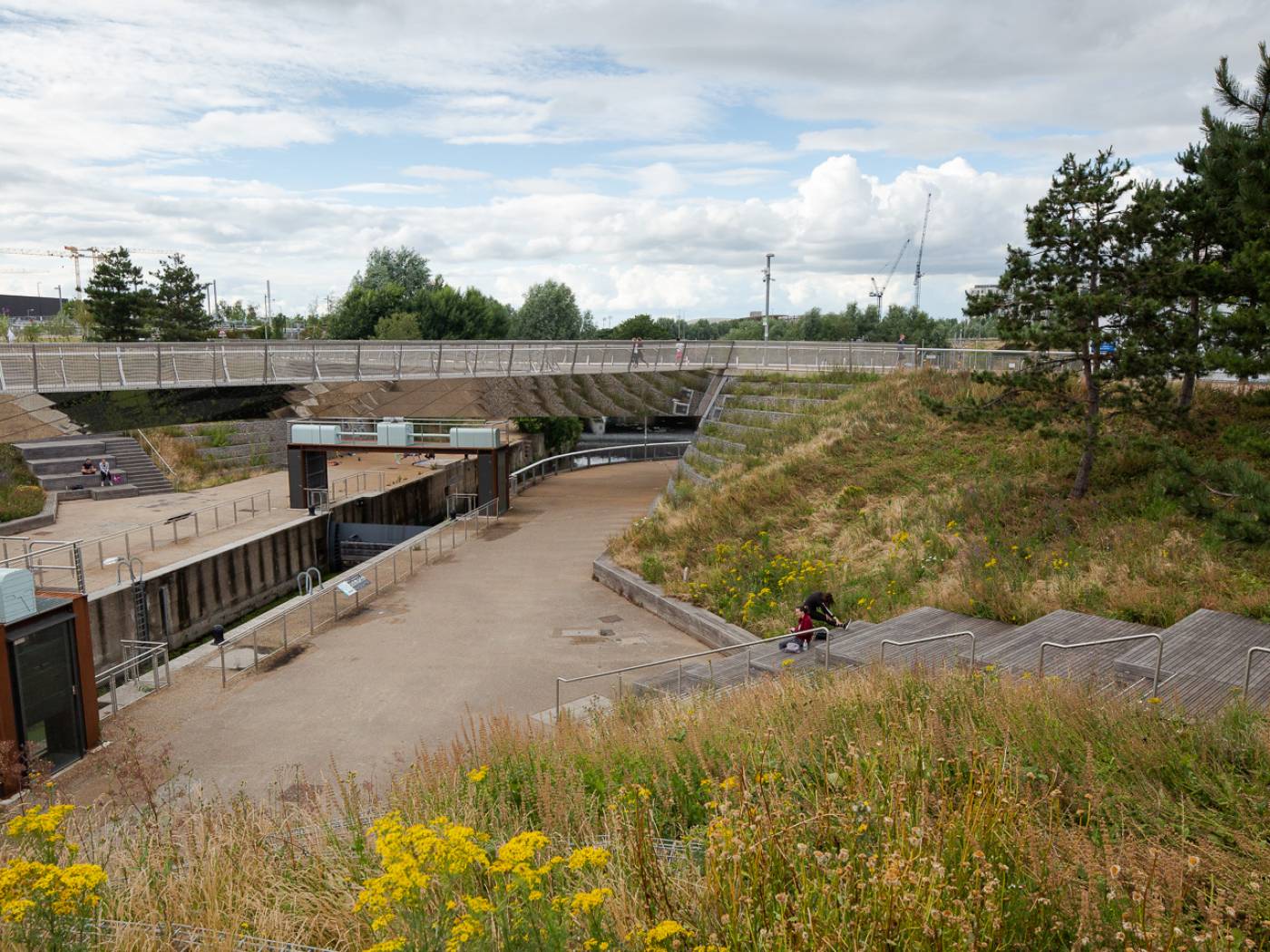
Flow Unlocked is an autistic-led project which explores narratives relating to autism, celebrating their talents and perspectives through film, photography, poetry and drawing. The collective behind the project have been making work through the lived experience of autism during the pandemic. (Queen Elizabeth Olympic Park. 2020)
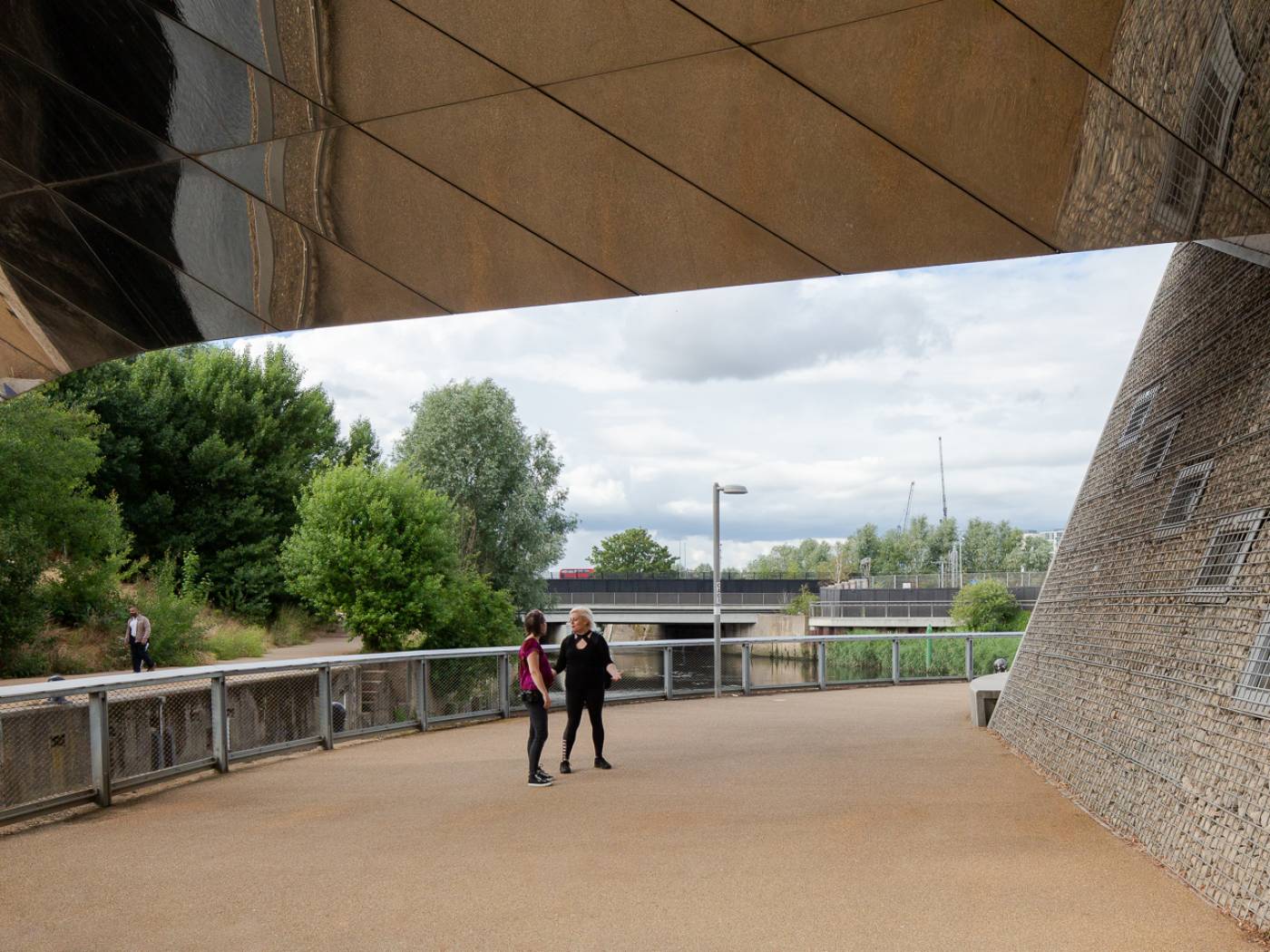
I met psychologist Dr Georgia Pavlopoulou and photographer Briony Campbell at the Olympic Park, Stratford, for a recce exploring potential spaces to film and photograph as part of their commission. This was early on in the commission, and they’d never met in person before, despite many long evenings of Zoom calls! (Queen Elizabeth Olympic Park. 2020)
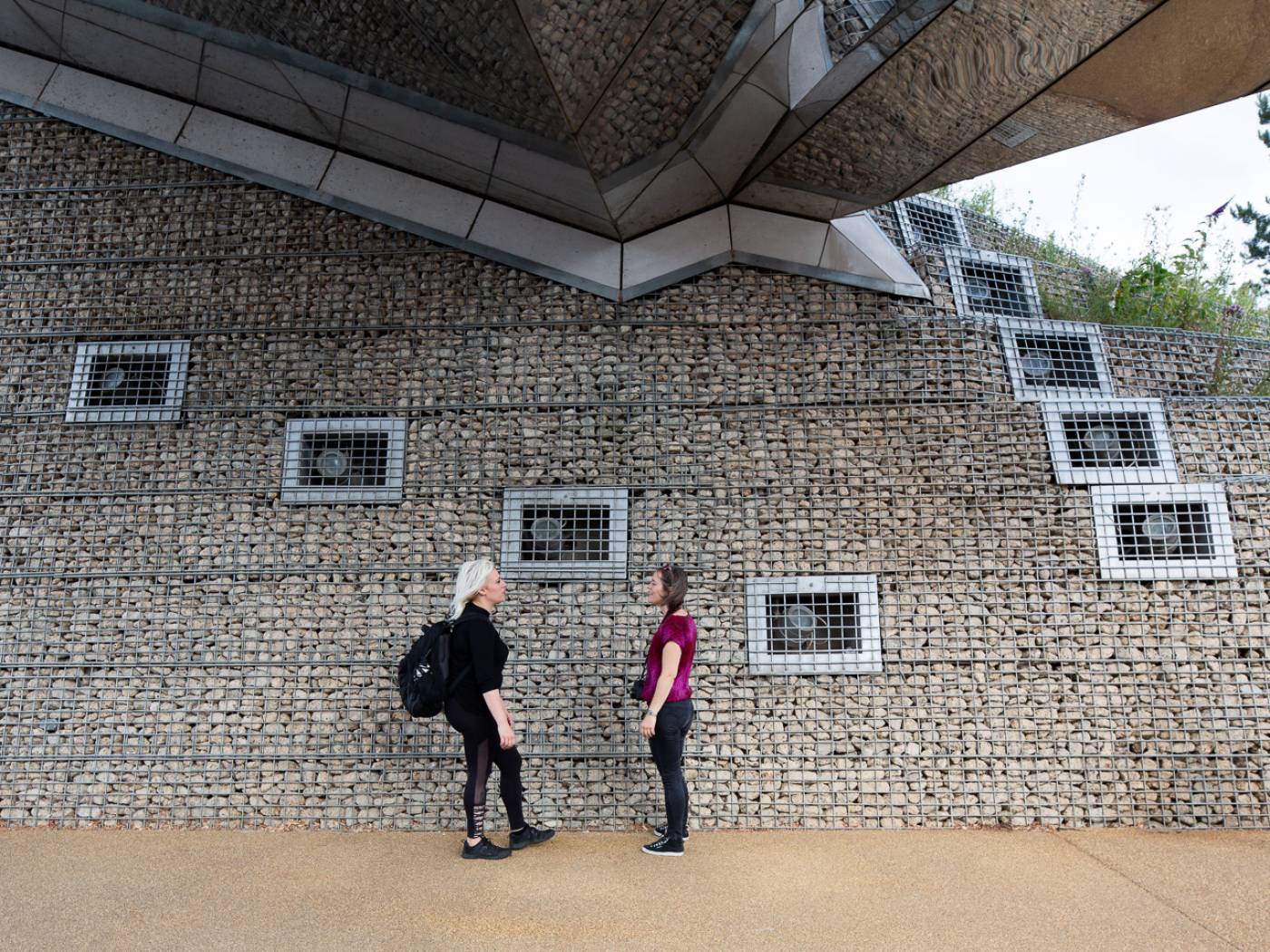
Walking along the canal that threads itself through the park, we stopped by a bridge with a reflective underside, as a potential location for the project. Unfortunately I didn’t get to meet co-collaborator Jon Adams, due to the pandemic restrictions in place last year, however they spoke a lot about him during the walk. He is a multi-disciplinary artist with work that focuses on autism, and is an integral part of the collective. (Queen Elizabeth Olympic Park. 2020)
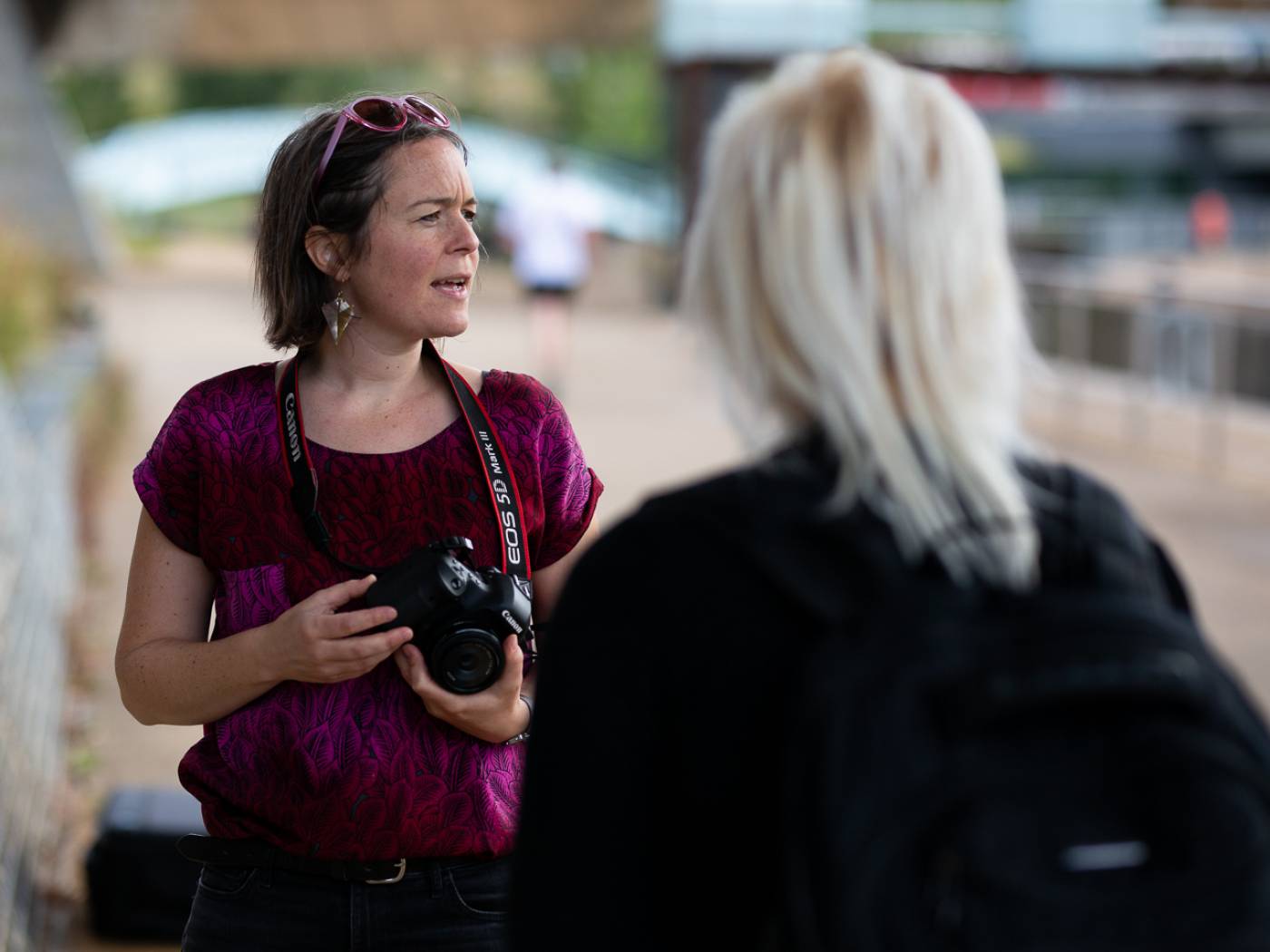
It’s sometimes challenging taking photographs of another photographer, but Briony made the experience very easy. We made space for each other to work, and helped each other out from time to time too. I noticed how she was constantly searching for photographs, which I remember relating to at the time! (Queen Elizabeth Olympic Park. 2020)
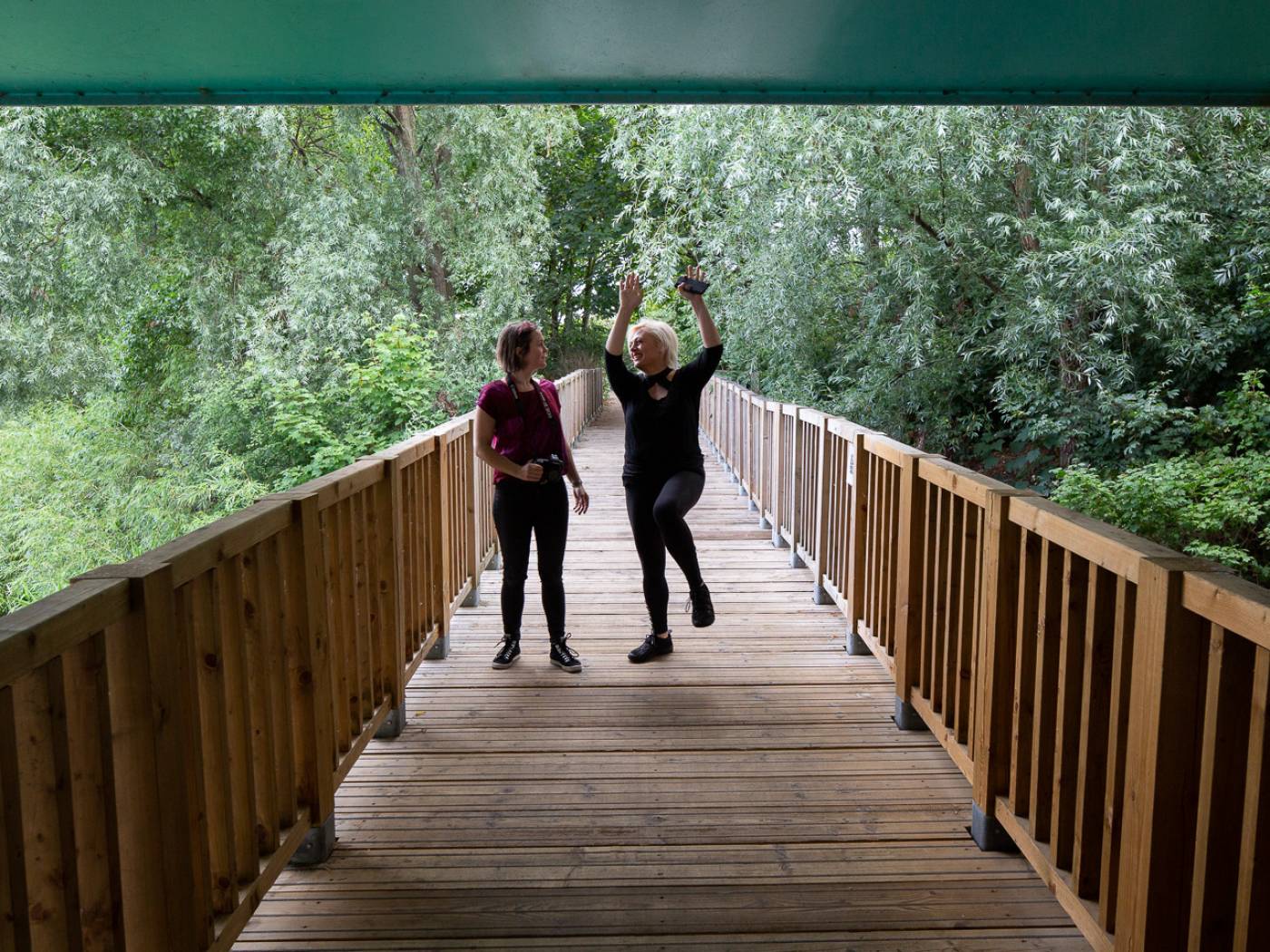
Under a bridge on the outskirts of the park. An integral outcome of Flow Unlocked is ensuring the process of making work for the project is collaborative and inclusive. Working with many autistic collaborators, the collective are highlighting the process of creating just as much as the final works themselves. (Queen Elizabeth Olympic Park. 2020)
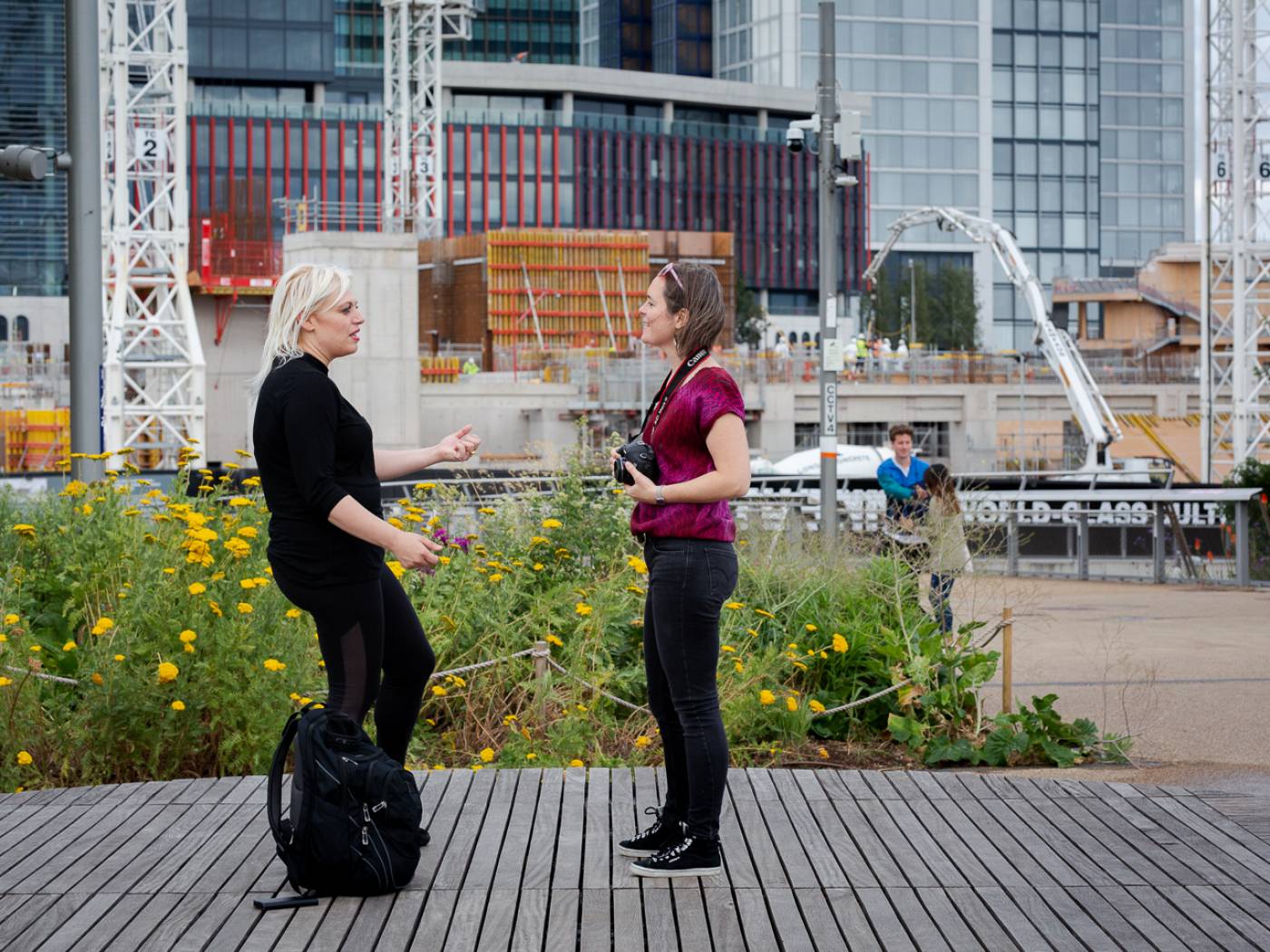
Across many workshops, the collective explored the importance of relationships in the lives of autistic people. UCL psychologist Georgia Pavlopoulou’s research on such relationships and the mental health of autistic people drove the commission, with Briony and Jon guiding the participant’s creativity, reflecting on the process with works themselves. (Queen Elizabeth Olympic Park. 2020)
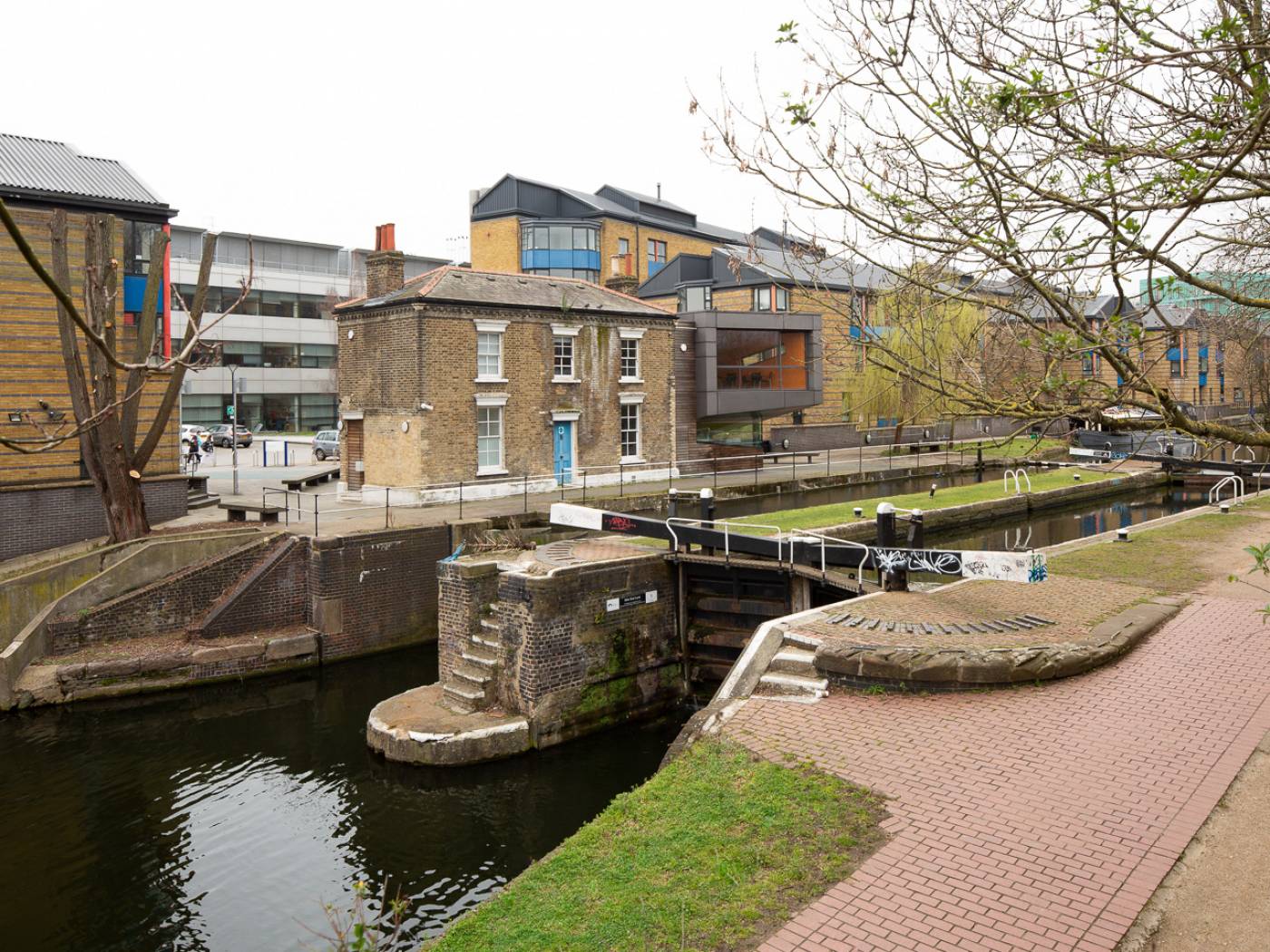
One of the locations for Briony’s photography was Mile End Lock, on the Regent’s Canal. This is somewhere I know very well from living nearby a number of years ago, and a place for peace and reflection with the bustle of Mile End only metres away. Flow Unlocked aims to destroy the stereotypes linked to autism, generating work that challenges these misconceptions. (Mile End Lock. 2021)
NB You can control the slideshows by clicking on the dots underneath the images.
Mulberry - Tree of Plenty
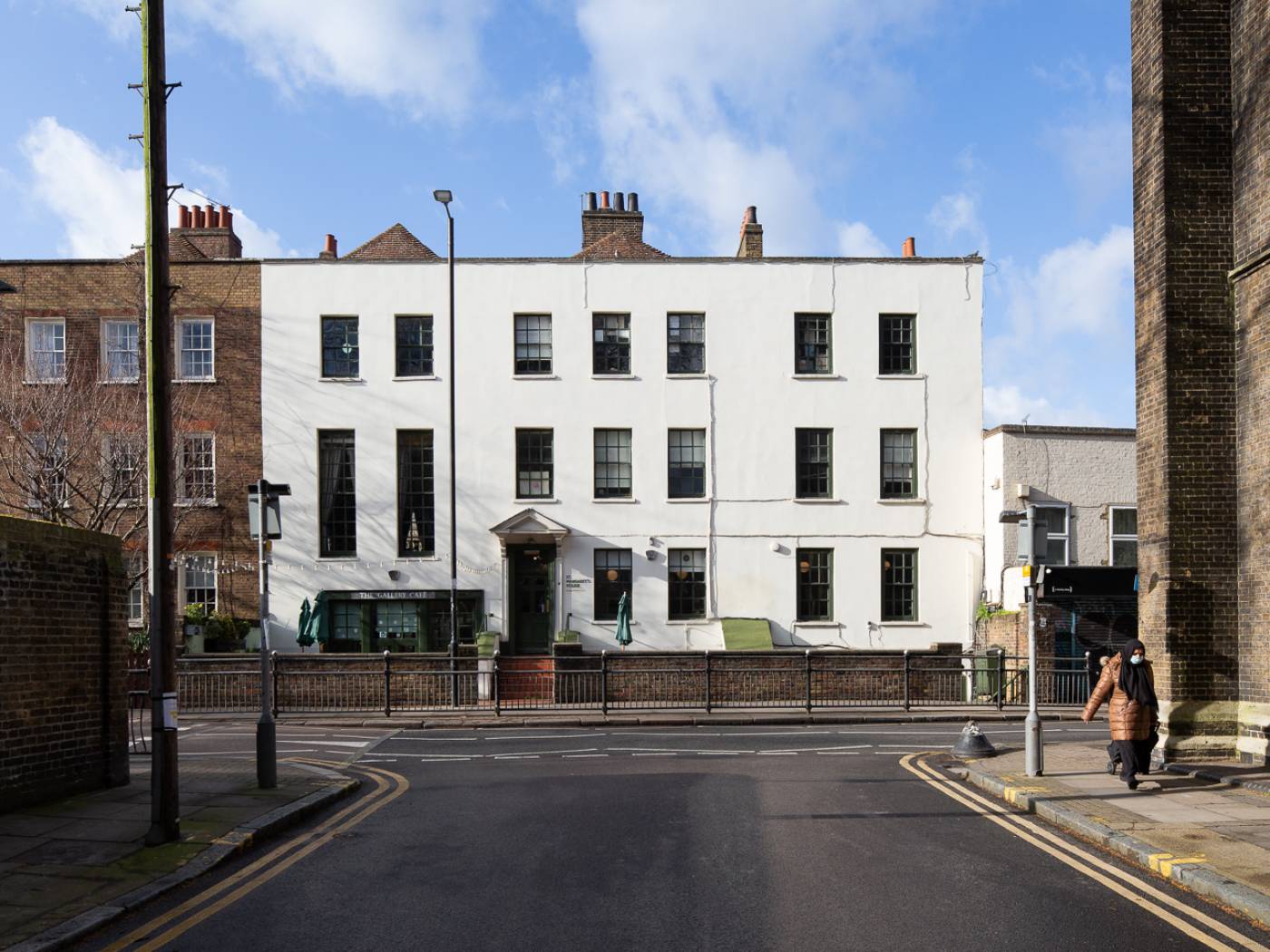
St Margaret’s House is the location for the project Mulberry - Tree of Plenty. The building was initially used as a ladies mission, and the house has been involved with numerous community groups and projects since 1903. The commissioned project explores the materiality of the mulberry tree, it’s place in scientific research, and the heritage and symbolism of this iconic tree. (St Margaret’s House, Bethnal Green. 2021)
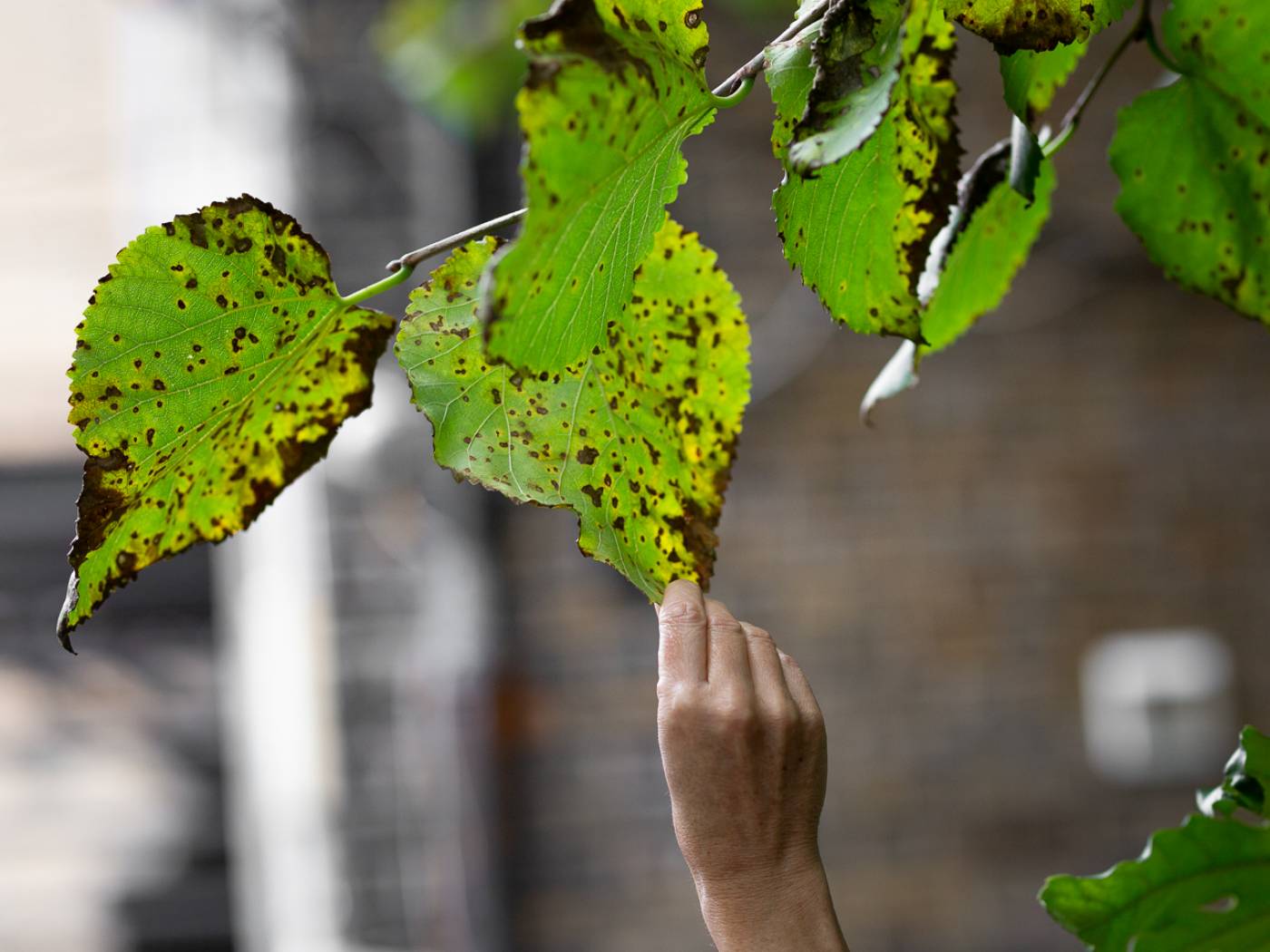
There is a famous black mulberry tree in the garden of St Margaret’s, dating back at least 70 years. One of the few remaining in Bethnal Green, a borough synonymous with the mulberry fruit and it’s symbolism. The project is a collaboration between St Margaret’s House, the artists Jane Watt and Sara Heywood, and associate UCL professor, David Chau. (St Margaret’s House, Bethnal Green. 2020)
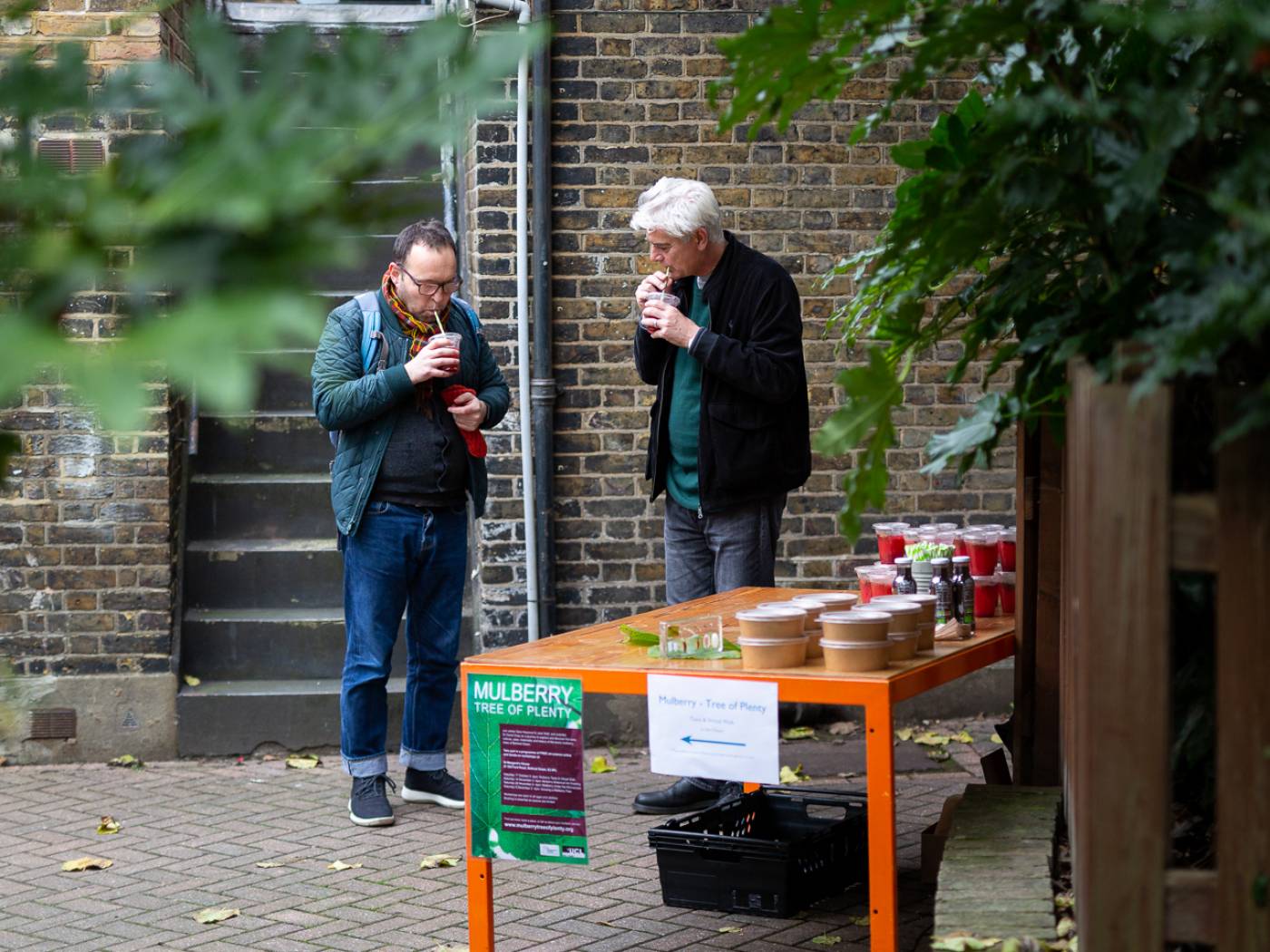
In October last year, an event was held at St Margaret’s to present a film about a walking tour of the mulberry trees of Bethnal Green. Mulberry-based snacks and refreshments were made for the occasion, using berries from the tree in the garden. The event was very carefully organised during the restrictions in place late last year, with timed slots to ensure social distancing. (St Margaret’s House, Bethnal Green. 2020)

Fresh mulberries harvested from the St Margaret’s tree were blended with lemons and sugar to make a unique refreshing drink. (St Margaret’s House, Bethnal Green. 2020)
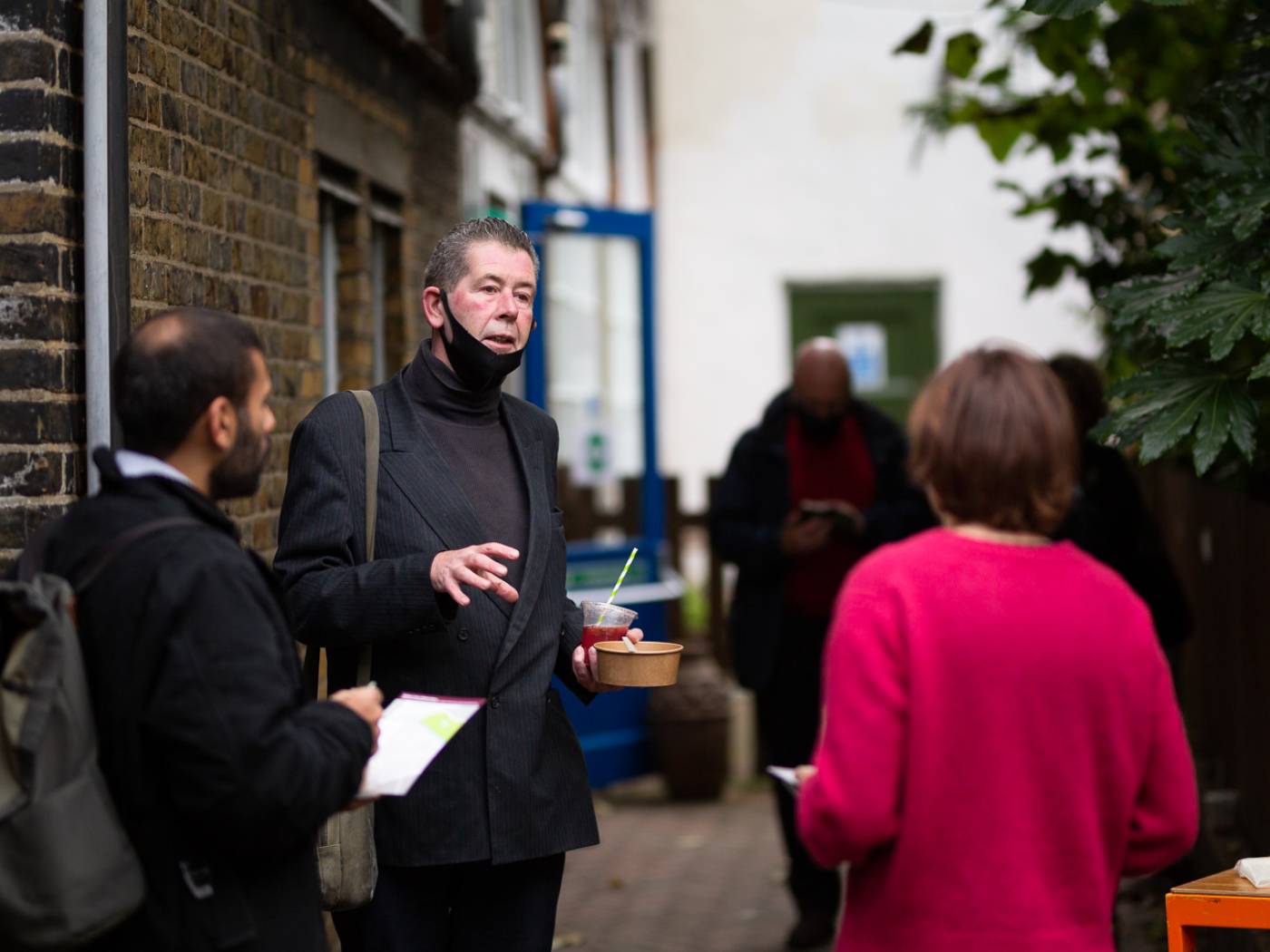
Attending the event were many who held the mulberry tree in high regard, including this gentleman who shared his wide knowledge with the other attendees. One of the most enjoyable factors of documenting the commissions was learning so much of the history of the East End I had little knowledge of, including the rich history of this particular tree. (St Margaret’s House, Bethnal Green. 2020)
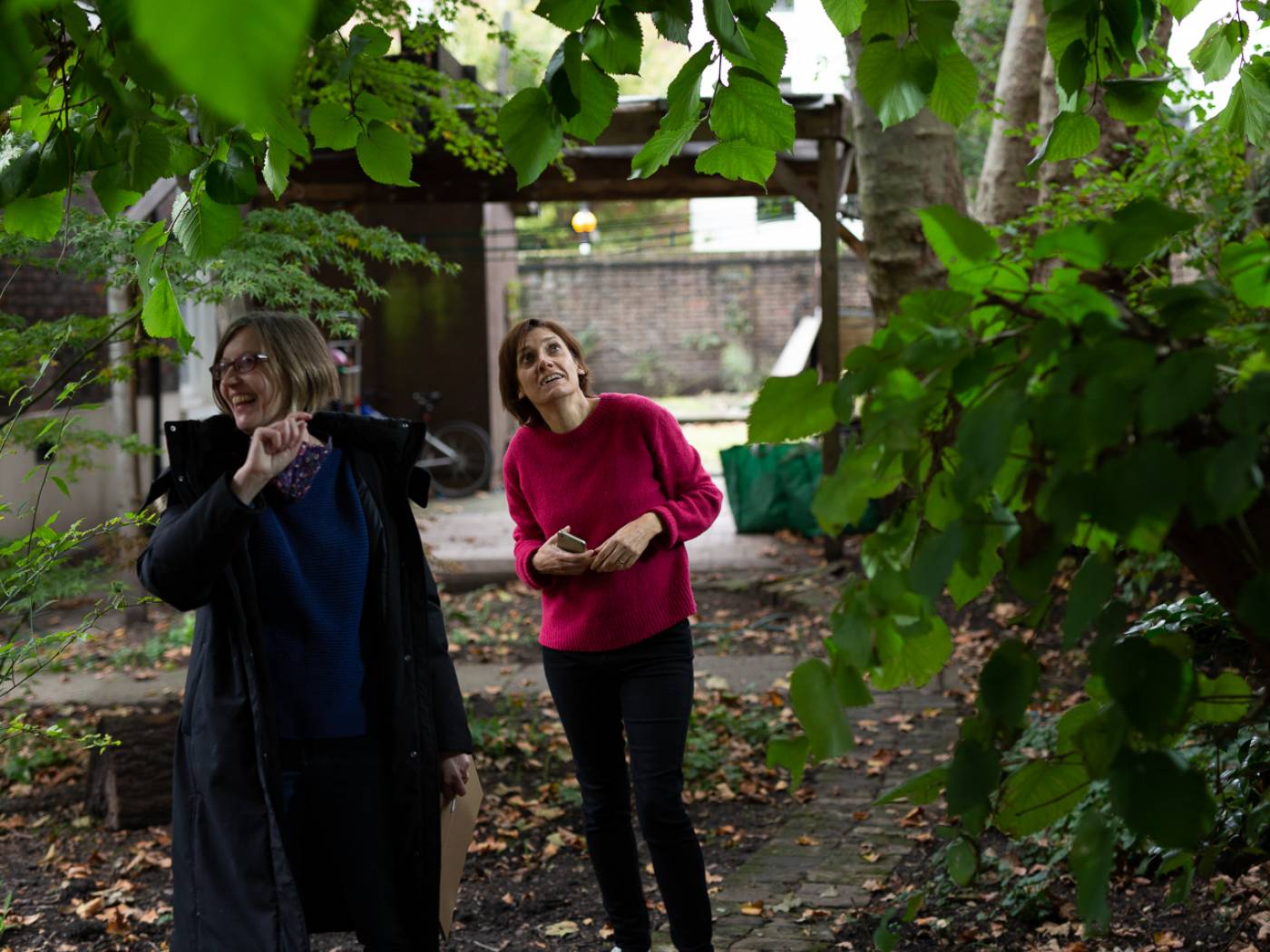
Towards the end of the event, we were spontaneously invited to a shared garden nearby, to be shown a mulberry tree that was hidden from public view. It was a lovely moment that artists Sara Heywood and Jane Watt encouraged and facilitated at short notice! (St Margaret’s House, Bethnal Green. 2020)
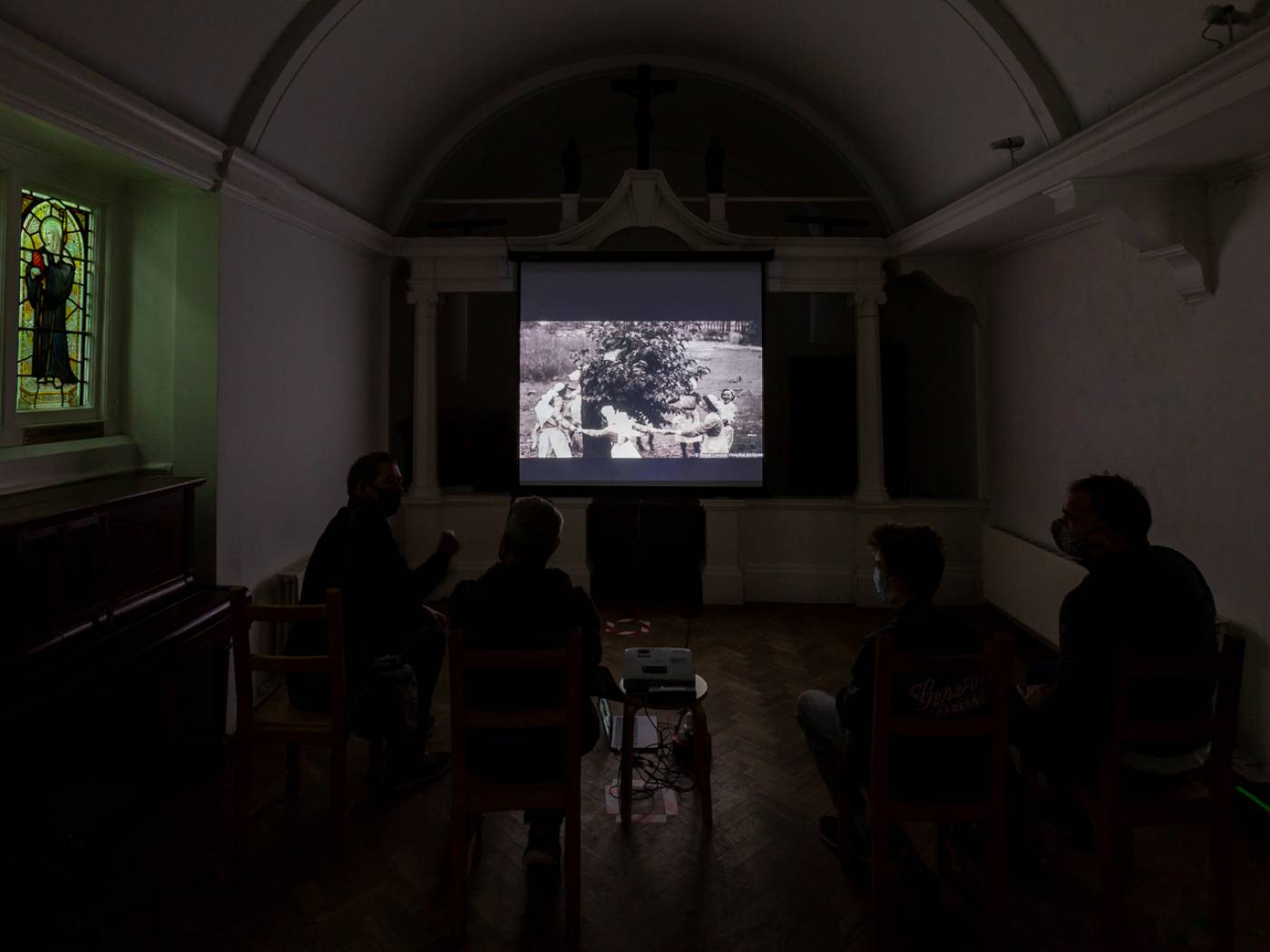
The Mulberry Virtual Walk film, projected in the chapel of St Margaret’s House. On the screen is a photo of the Bethnal Green Mulberry Tree, believed to be the oldest tree in the east end dating back over 400 years. The tree is currently under threat as part of the redevelopment of the London Chest Hospital site. (St Margaret’s House, Bethnal Green. 2020)
NB You can control the slideshows by clicking on the dots underneath the images.
H Is For Hostile Environment
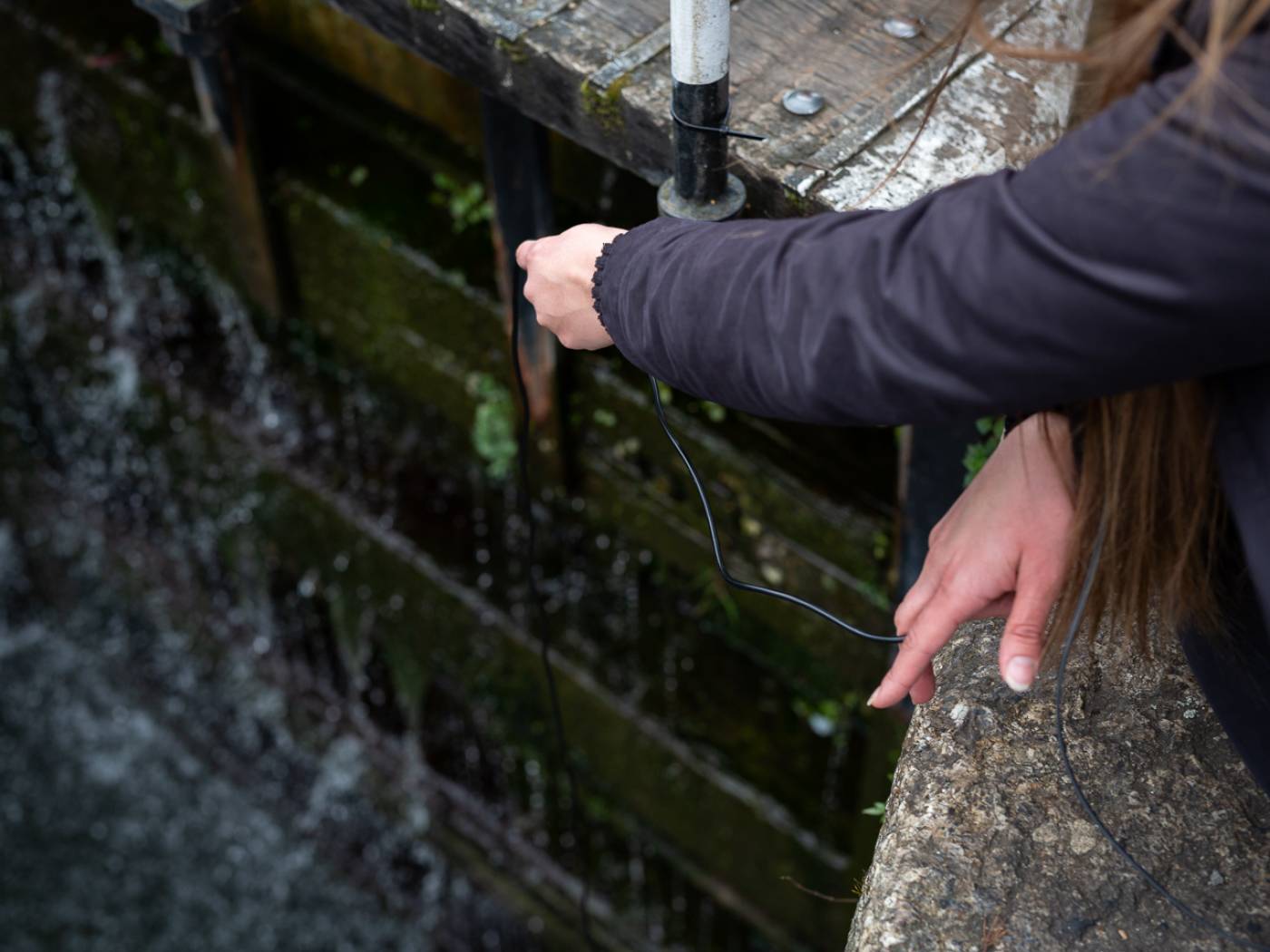
Collecting sound recordings at Acton’s lock on the Regent’s canal. I met filmmaker Edwin Minguard and participants in the project H is for Hostile Environment, on a walk from Haggerston to Hackney Wick. Edwin was helping the contributors collect sound recordings and moving images for the commission, which explores migration and asylum seeking in East London. (Regent’s Canal. 2021)
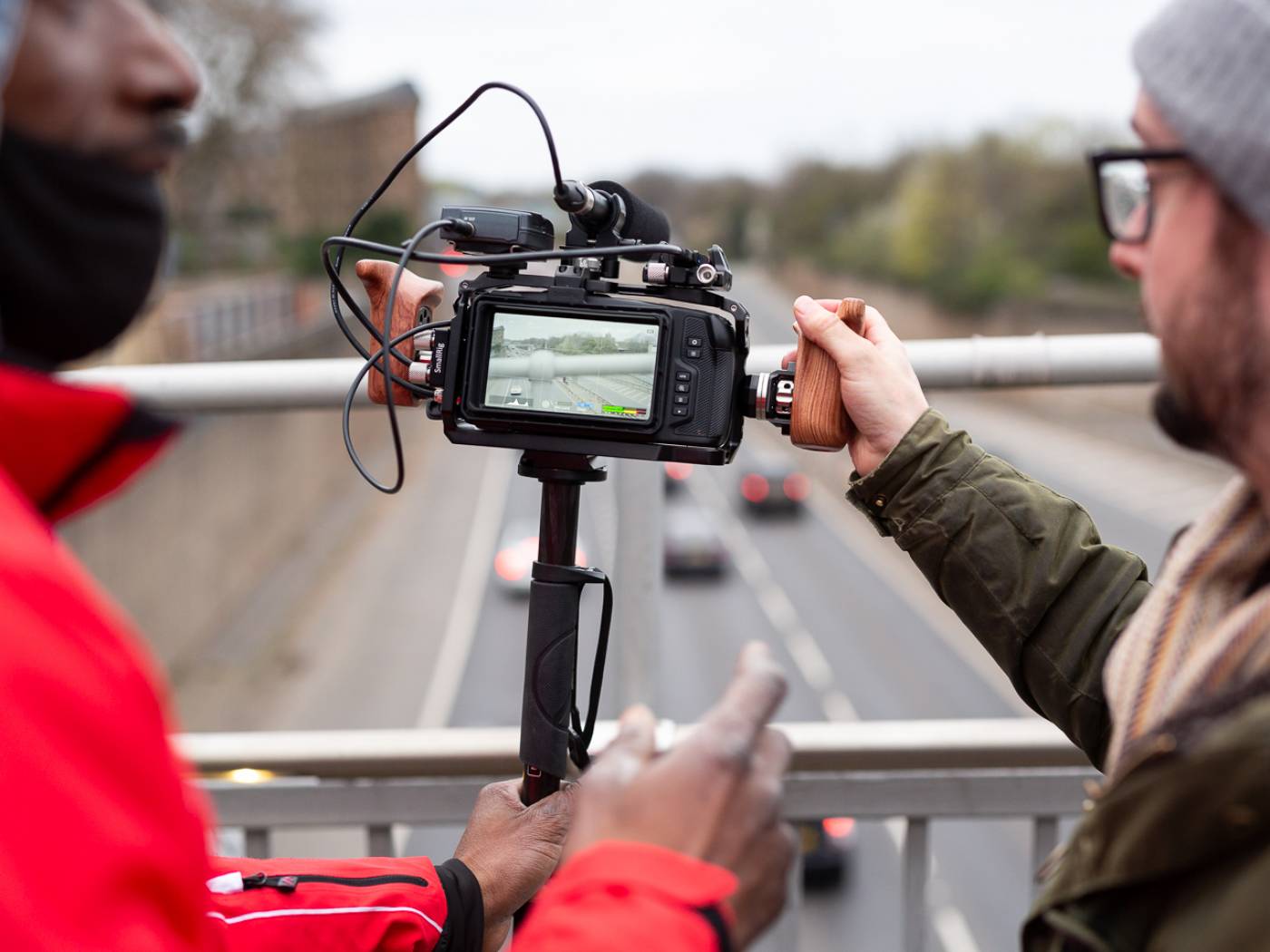
The filmmaker, alongside historian Keren Weitzberg, collaborated with participants whose lives have been directly affected by the UK’s increasingly hardline border regime. The film will cover the topic in myriad ways, encouraging the participants to express the mixed emotions of navigating a life in East London as a migrant. (Hackney Wick Flyover. 2021)

Walking through East London, we stopped at the Cranbrook Estate in Bethnal Green, collecting ambient wild track recordings. Edwin and Keren helped choose specific locations on the walk to highlight themes that emerged through dialogue with the contributors. (Cranbrook Estate. 2021)
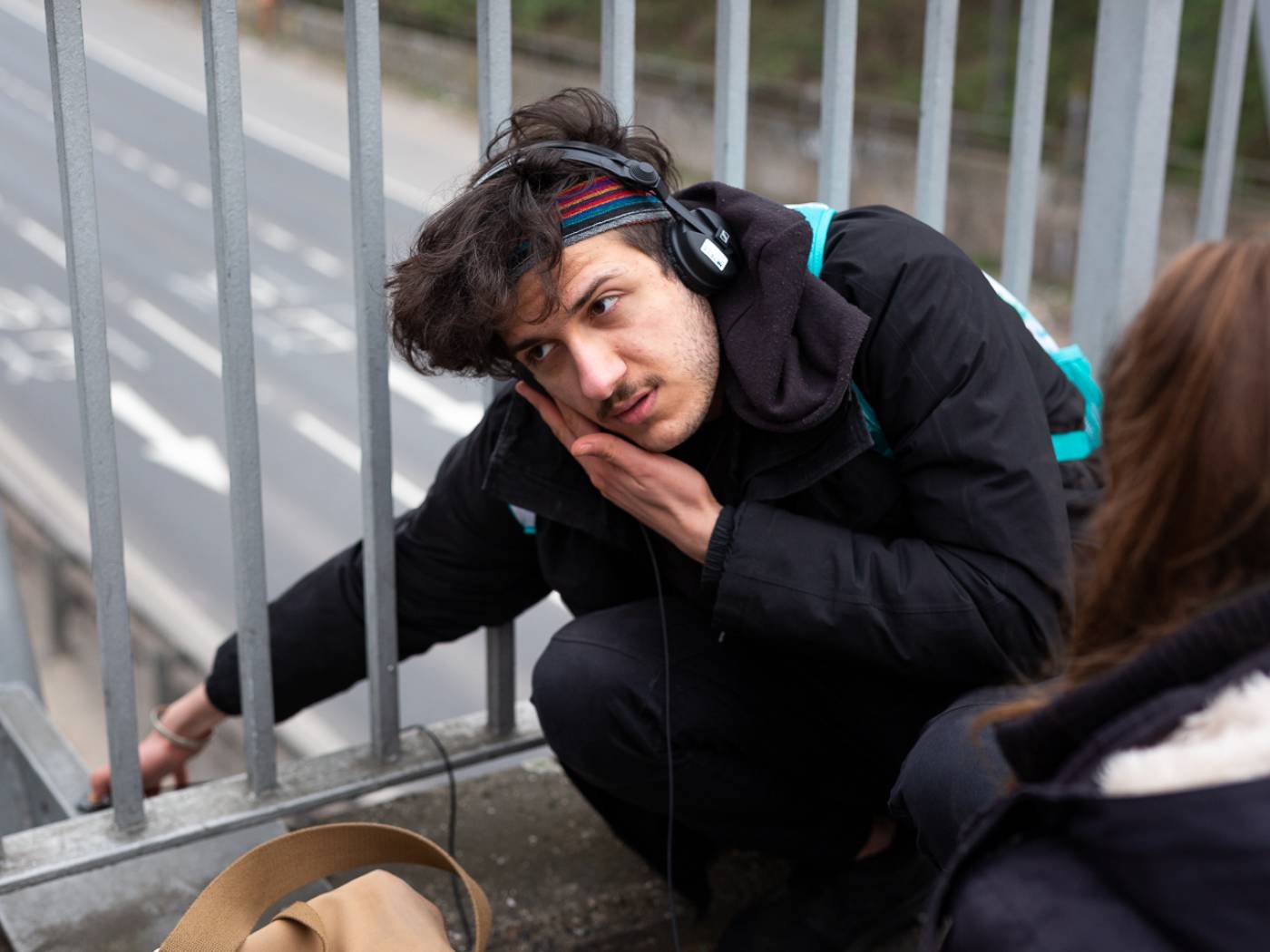
Using a contact microphone, sound was recorded directly from the bridge over the A12 from Victoria Park to Hackney Wick, picking up the vibrations of the road below. Watching the team collect recordings, in an area of London that has a history of tension built through opposing views of ‘home’, was an empowering experience. (Hackney Wick Flyover. 2021)

My second shoot for H is for Hostile Environment was at Edwin’s flat in Deptford. It was great to meet historian Keren Weitzberg, whose work covers biometrics, mobile identity, and surveillance. Keren and Edwin spent an afternoon dismantling an iPhone, filming the process as part of their film. (Deptford. 2021)
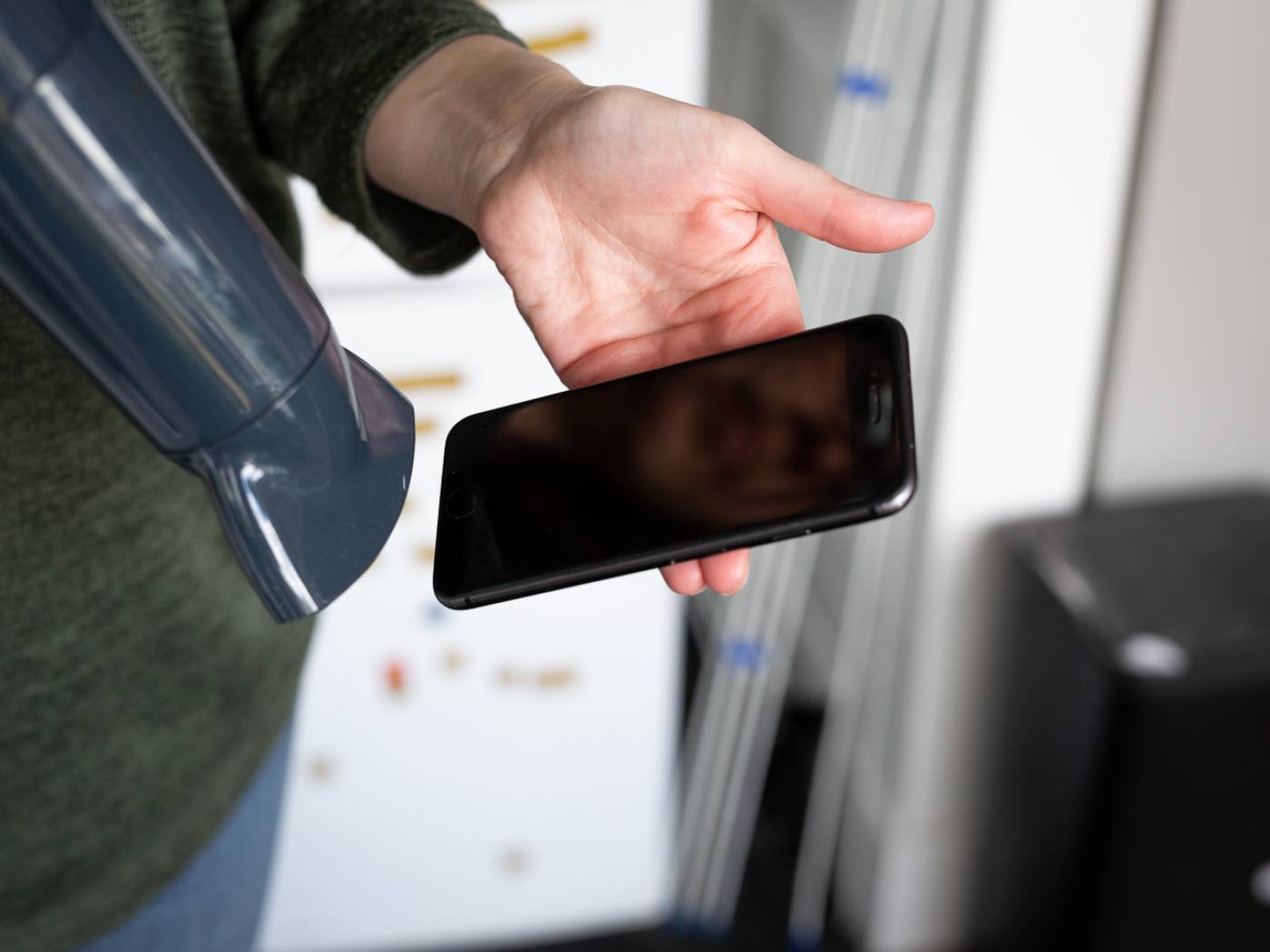
To begin the process, Keren heated the edges of the mobile phone with a hairdryer, to soften the glue that holds the screen in place. After some gentle leverage, the screen was removed and they got down to carefully dismantling the various parts of the phone piece by piece. (Deptford. 2021)
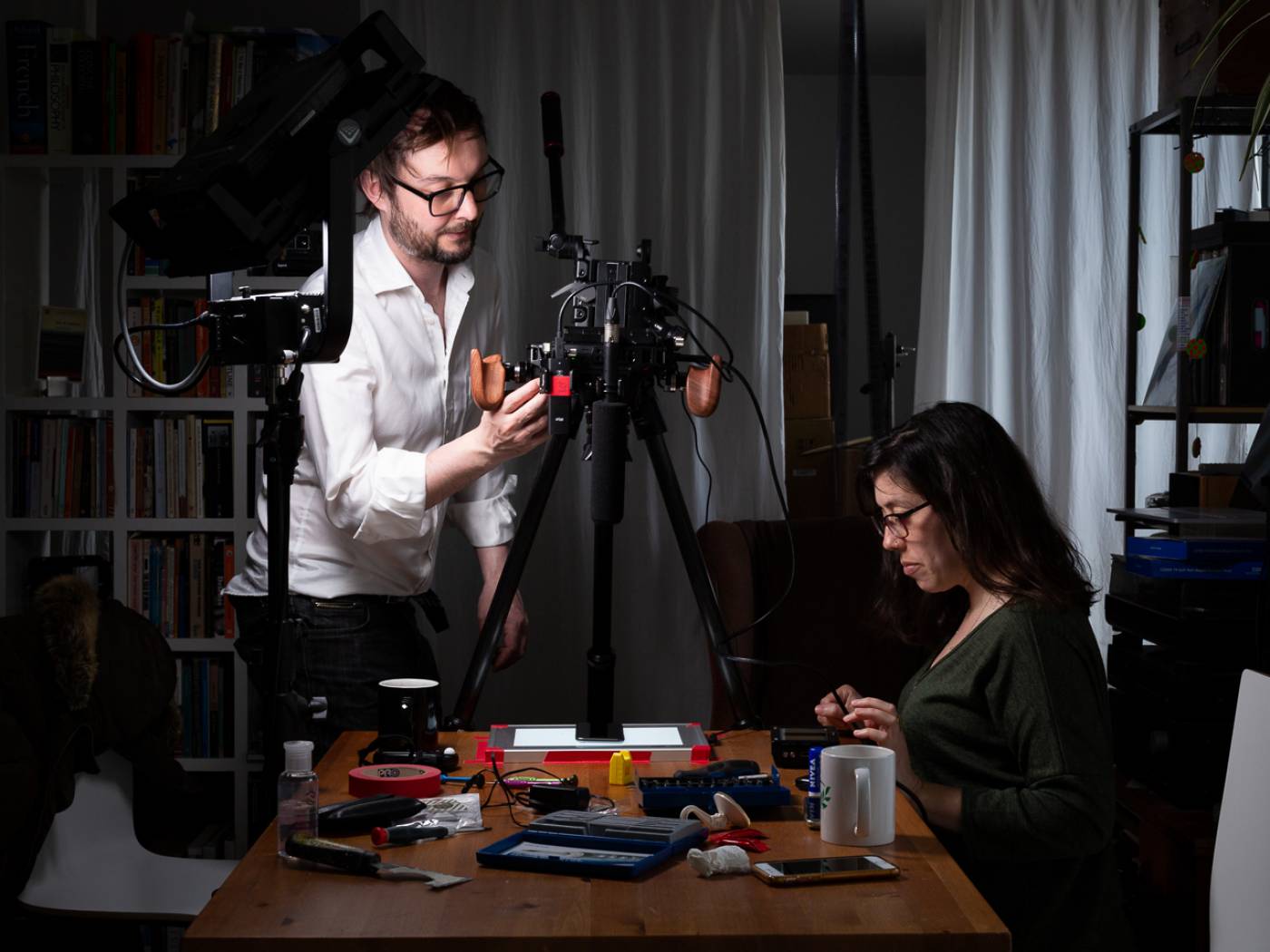
Having set up the phone on a lightbox, Keren made sure everything was looking good on the monitor while Edwin made the final tweaks to the camera setup. The Home Office increasingly utilises mobile phone data when monitoring asylum seekers and migrants in the UK. Their film aims to dissect the aggressively intrusive methods that the UK government use. (Deptford. 2021)
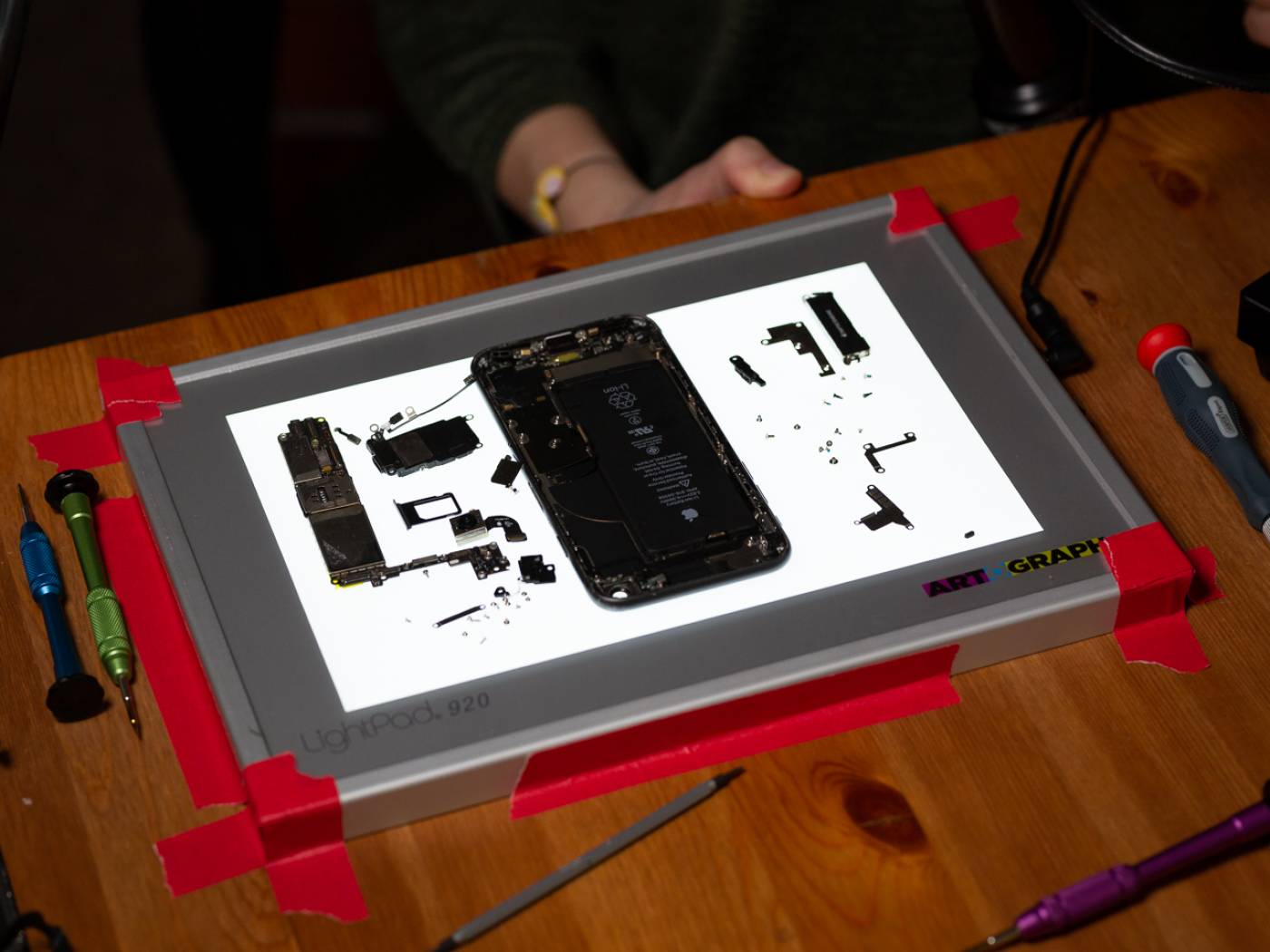
The partly dismantled iPhone. The small square box to the left is a camera, one of many parts used for surveillance hidden beneath the phone body.The largest part to the right of the phone is the taptic engine, which responds to motion and touch, giving the user vibration feedback. This design helps persuade the user to develop a tactile relationship with the device. (Deptford. 2021)
NB You can control the slideshows by clicking on the dots underneath the images.
Xenia Citizen Science Project
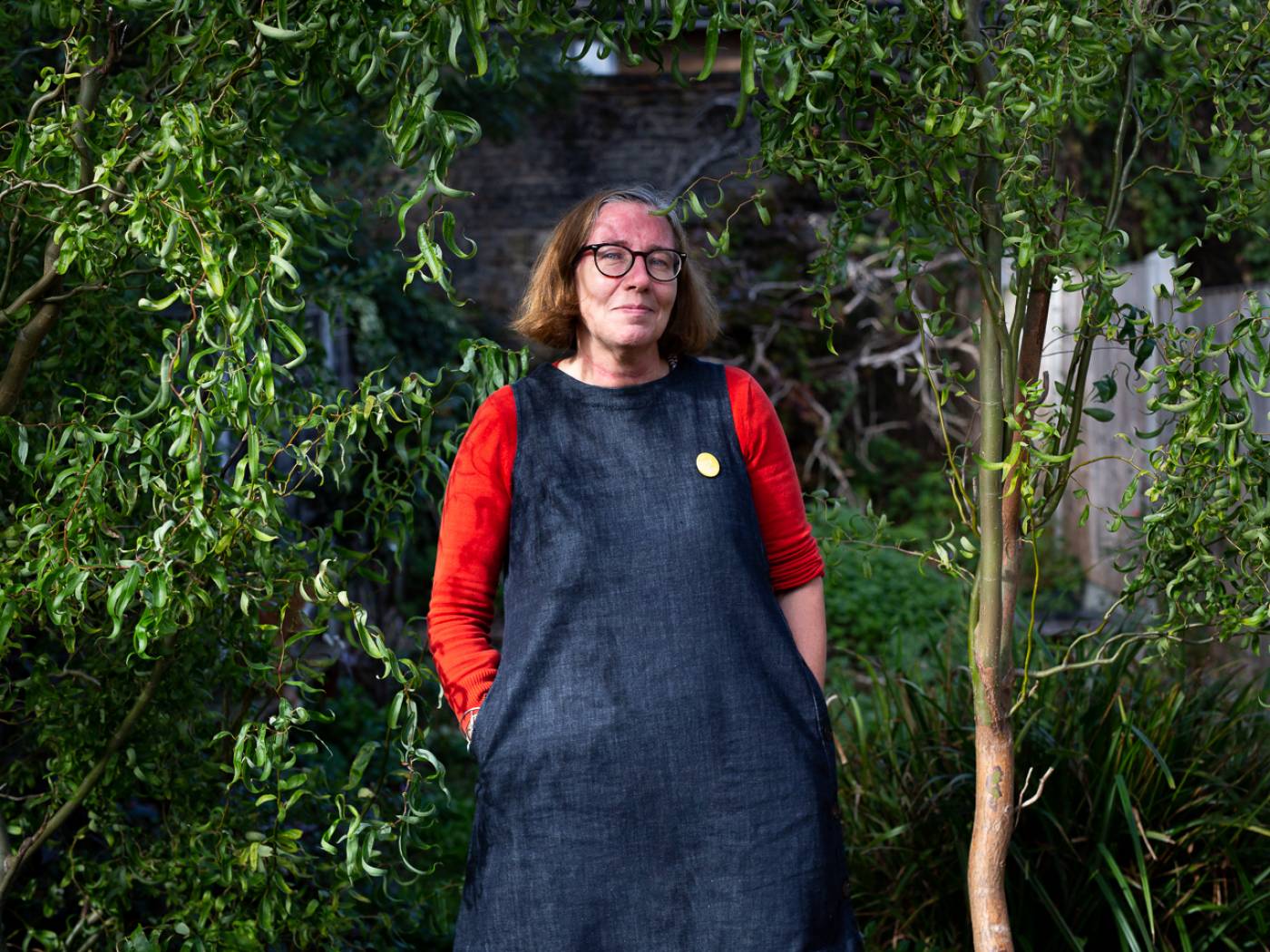
I met artist Sarah Carne in her garden in Clapton last October, to be introduced to the bokashi composting technique which would form part of the Xenia Citizen Science Project. The commission, a collaboration between Sarah, Charnett Chau and Danielle Purkiss from the UCL Plastic Waste Renovation Hub, and the Hackney-based women’s group Xenia, encourages discourse about food waste, plastic usage, and personal experiences of care in a disposable single use society. (Clapton. 2020)
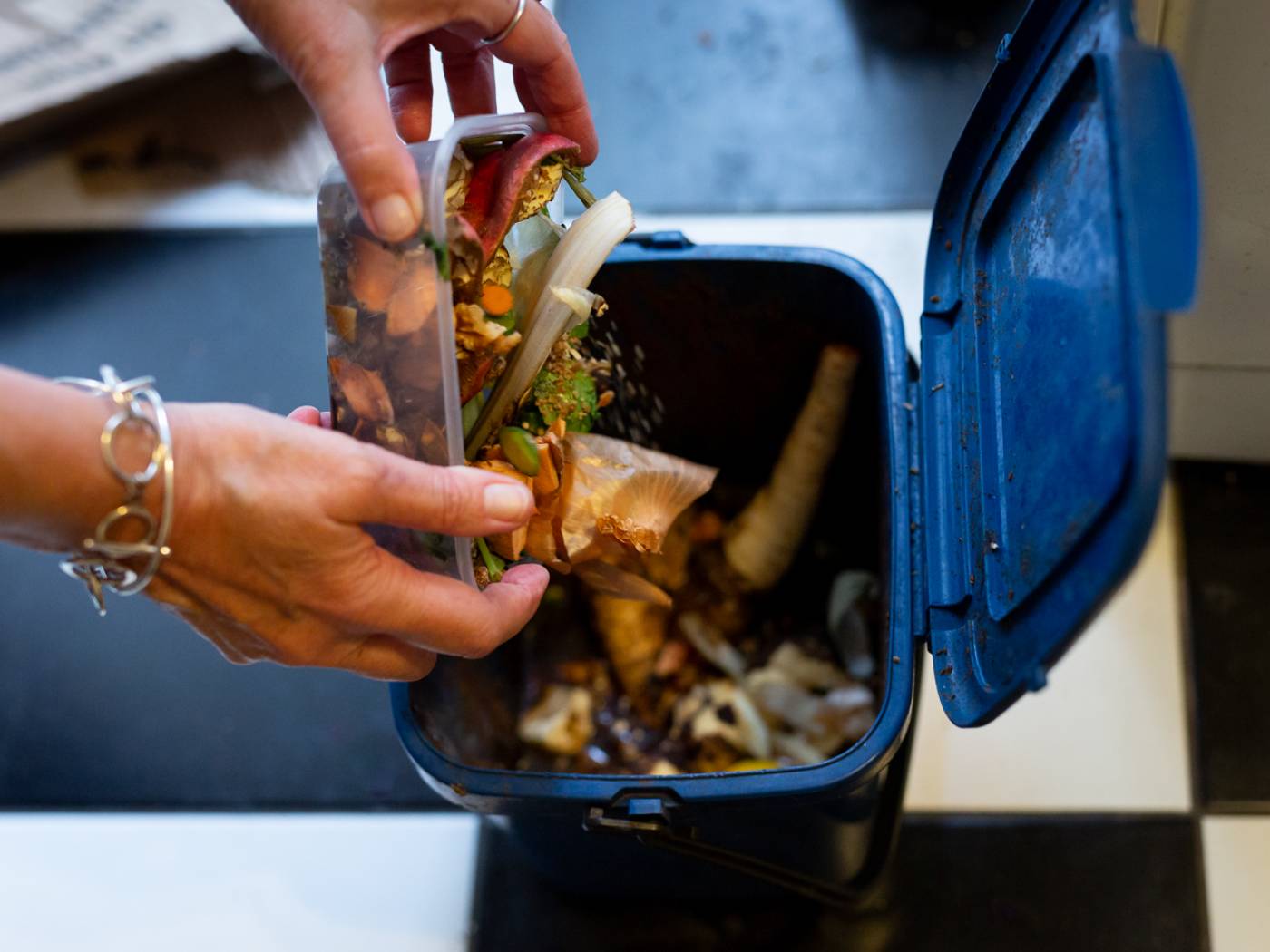
Sarah guided me through the process of composting food waste, which began by collecting all her organic food matter, temporarily keeping it in a council provided small caddy bin that’s kept in her kitchen. (Clapton. 2020)
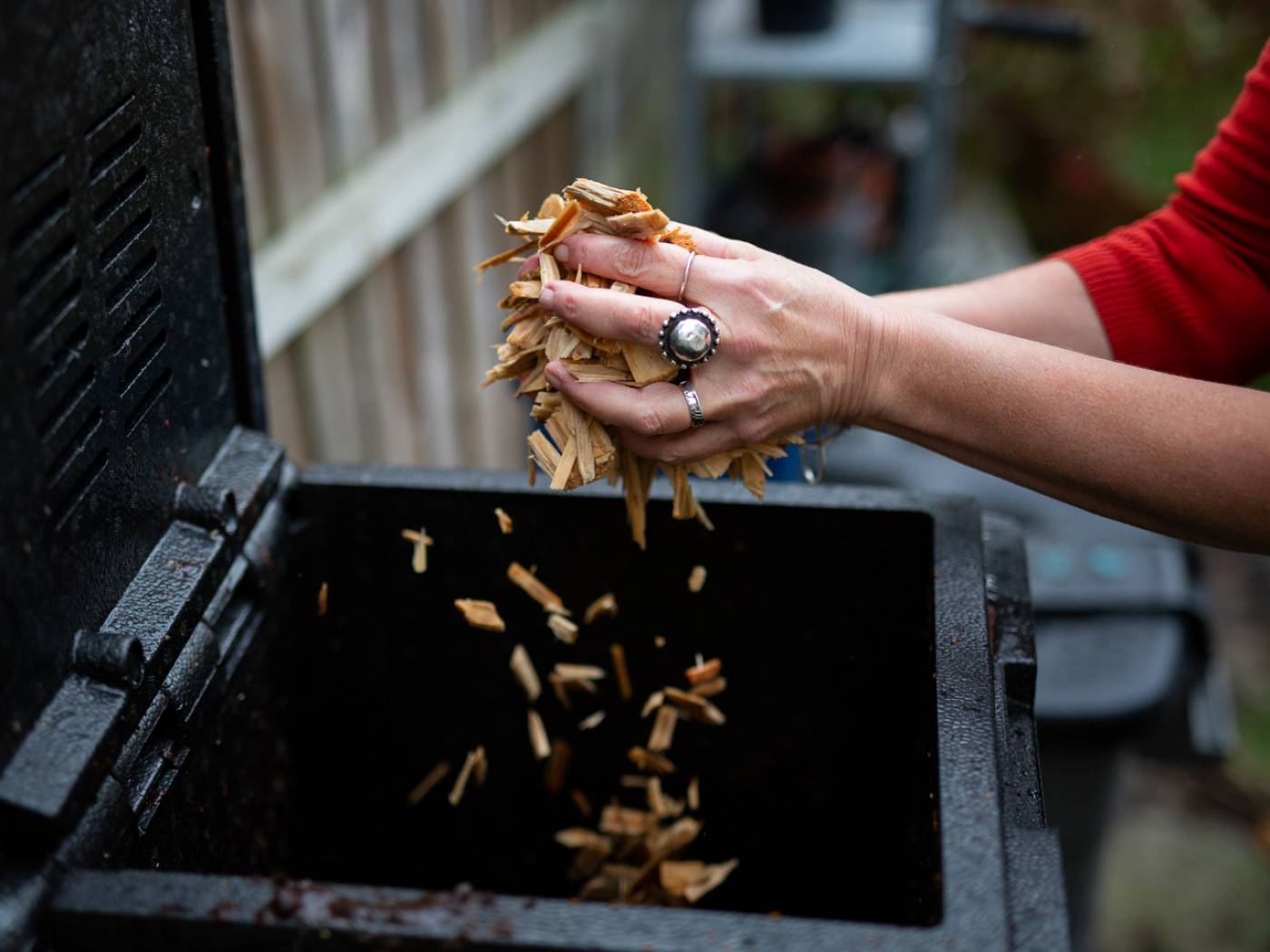
The food waste is then transferred to the bokashi bin in the garden, which is large enough to hold up to 200 litres of compostable material. When opening the bin lid steam was released, clearly showing the effectiveness of the design! Sarah then added wood chips and torn cardboard to encourage the composting process. (Clapton. 2020)
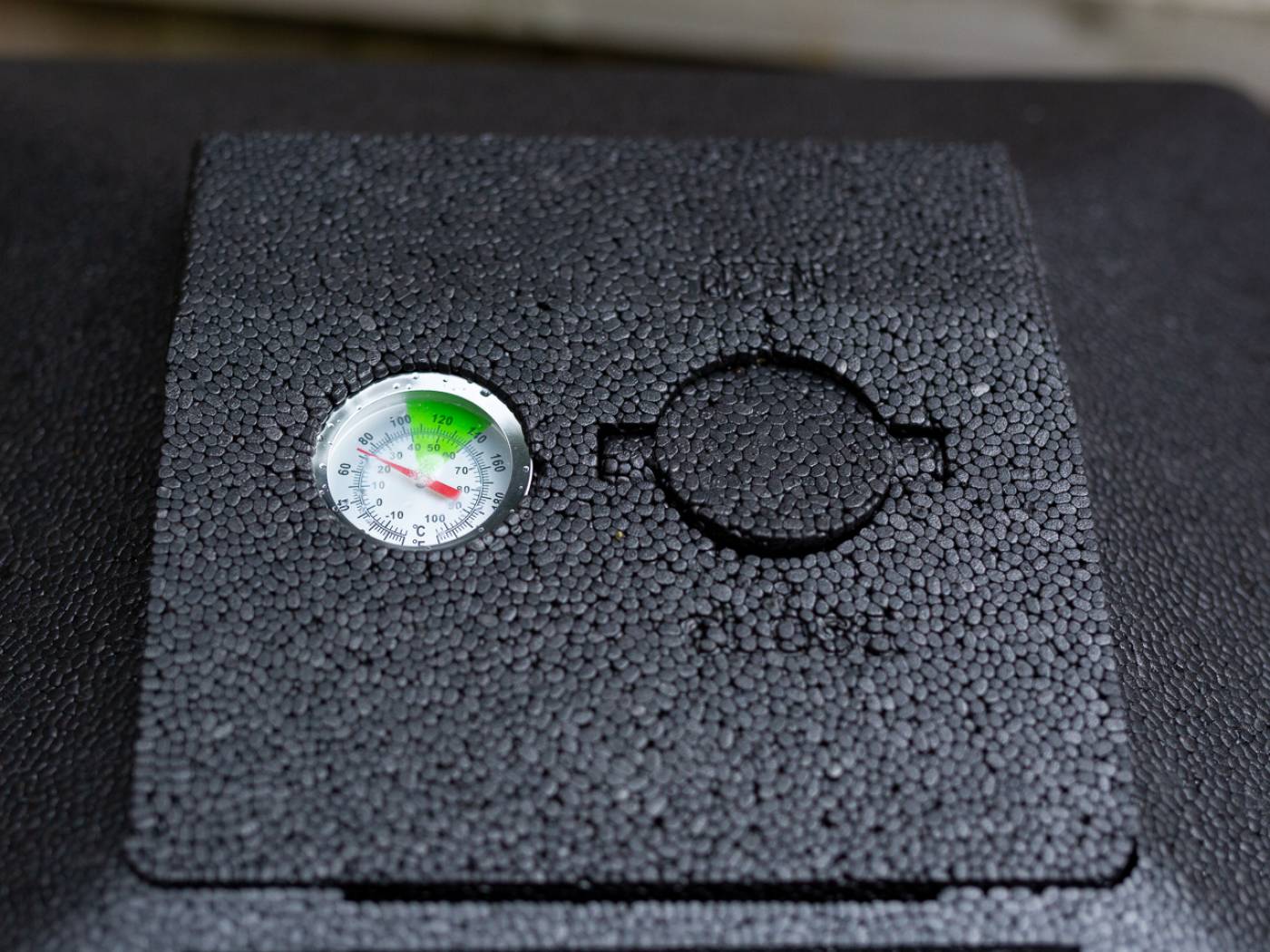
The bokashi bin is then sealed, with airflow and temperature controlled with a simple design on the lid. The internal temperature rises, transforming the food waste into compost at a rate 32 times faster than traditional methods. The internal temperature of the bin was up to 25 °c on the October morning that I visited. (Clapton. 2020)
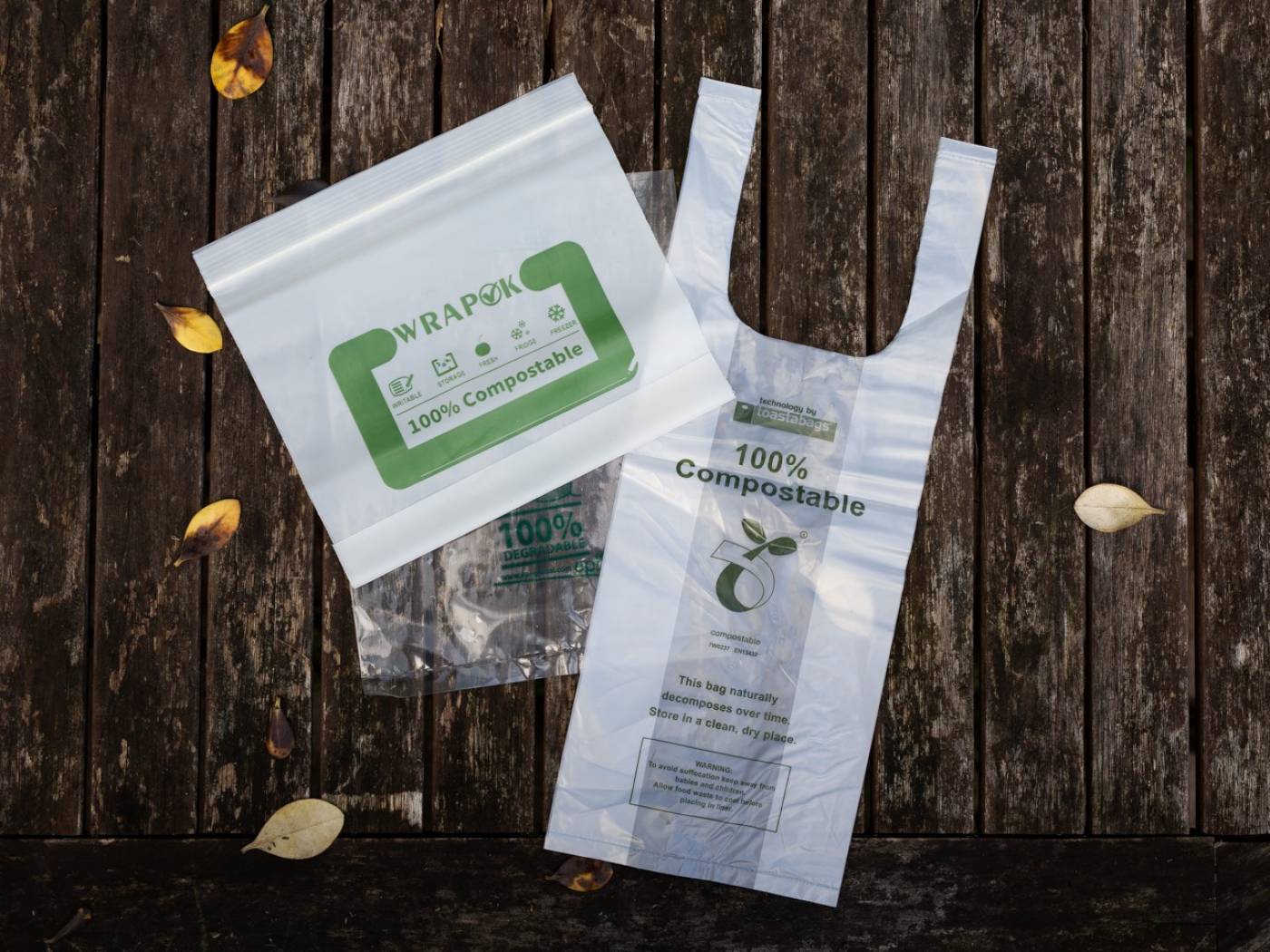
As part of their commission, the group also discussed the design and useability of biodegradable bags. Many designs take too long to degrade than is workable through composting processes, are regularly single use, and can unfortunately also end up in landfill. (Clapton. 2020)
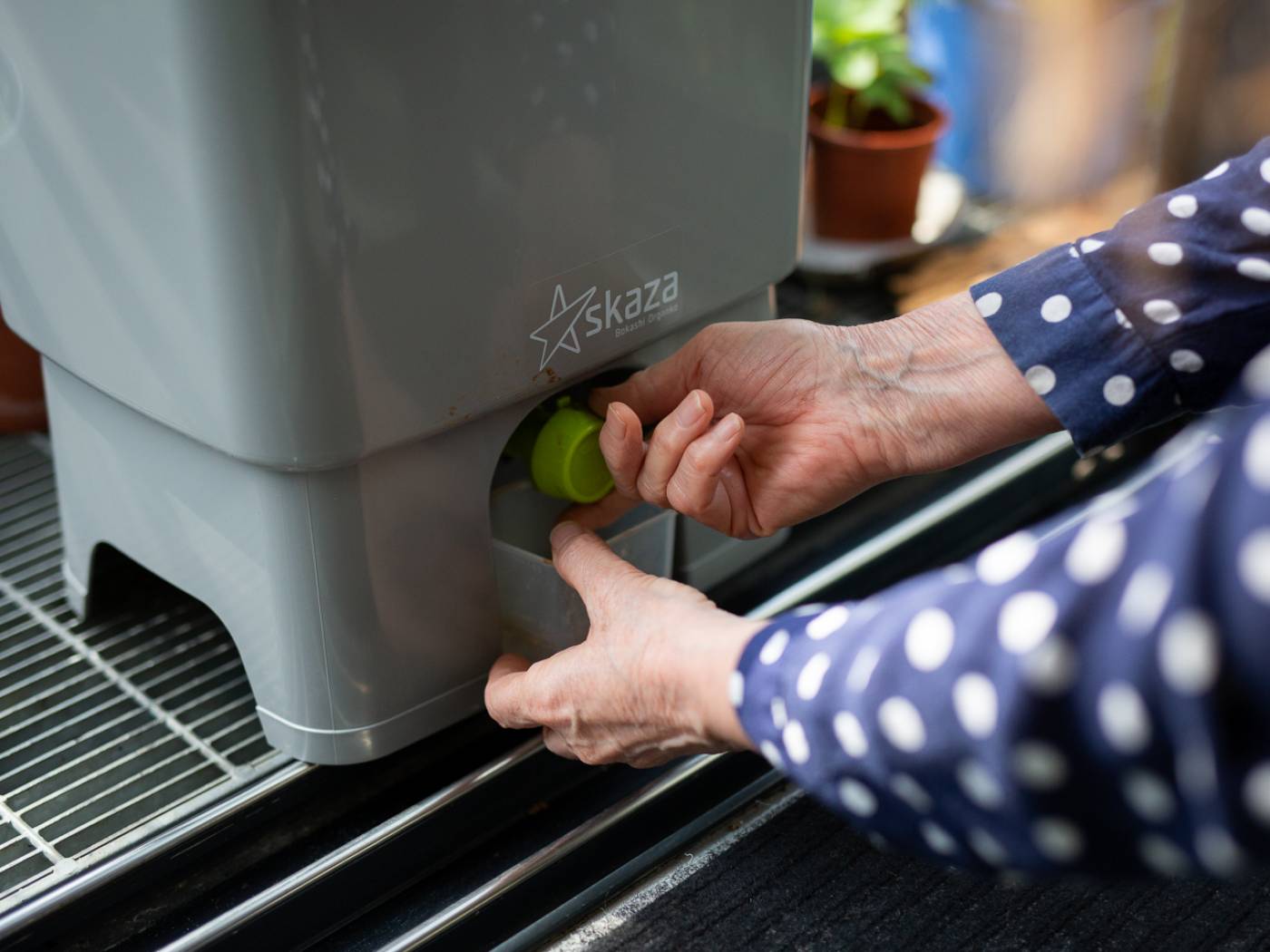
I met Lois Simes, a member of the women’s group Xenia and a participant in the bokashi composting project, at home in Victoria Park. For 6 months she has been using a bokashi bin for all her food waste. Here she is collecting the juice which collects at the bottom of the bin. (Victoria Park. 2021)
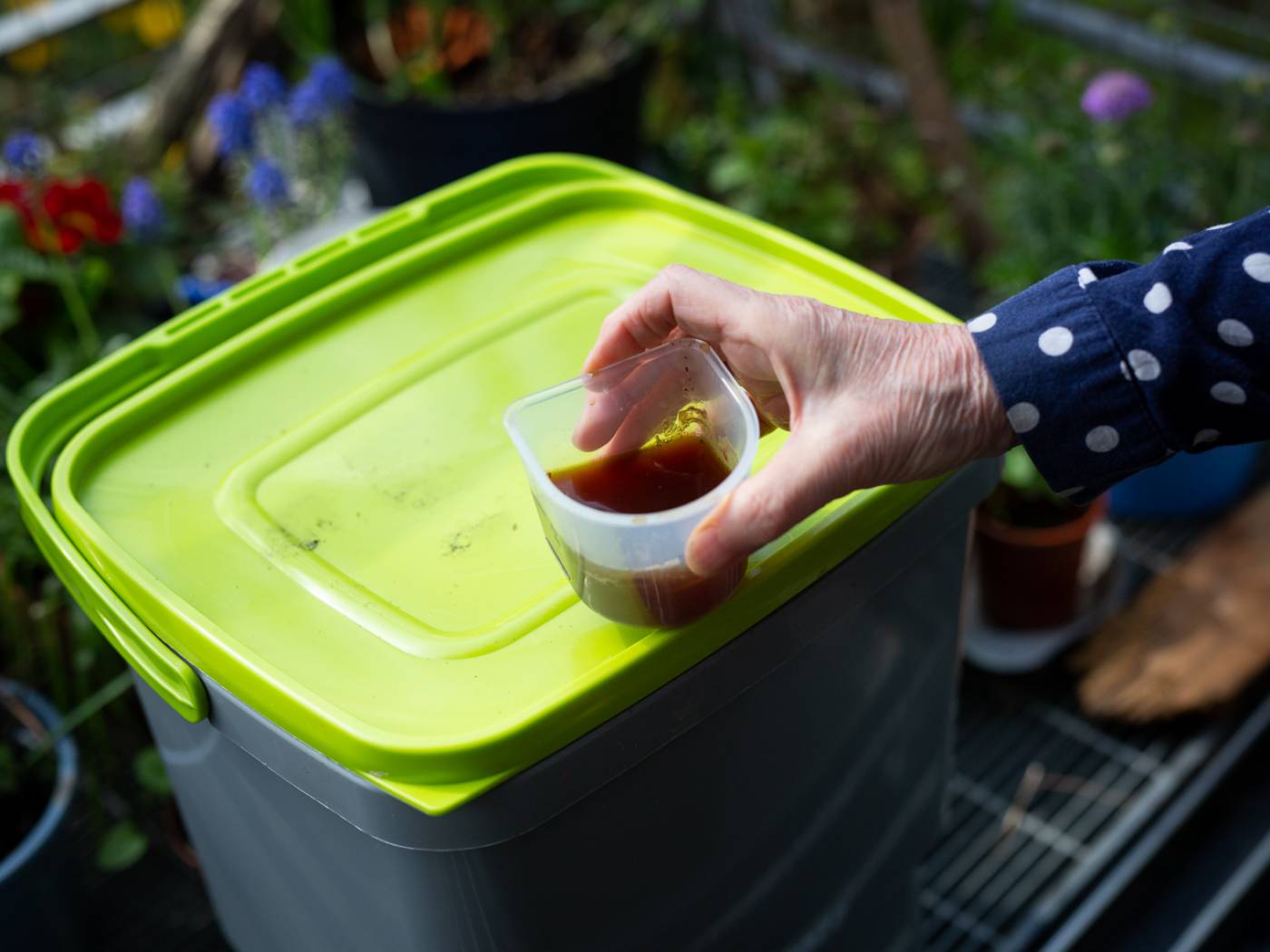
The juice makes for an incredibly powerful liquid fertiliser. It needs to be diluted 1:10 in order to not burn roots and young saplings. This fertiliser is also called Compost Tea, although it’s not recommended to brew up a cup! (Victoria Park. 2021)
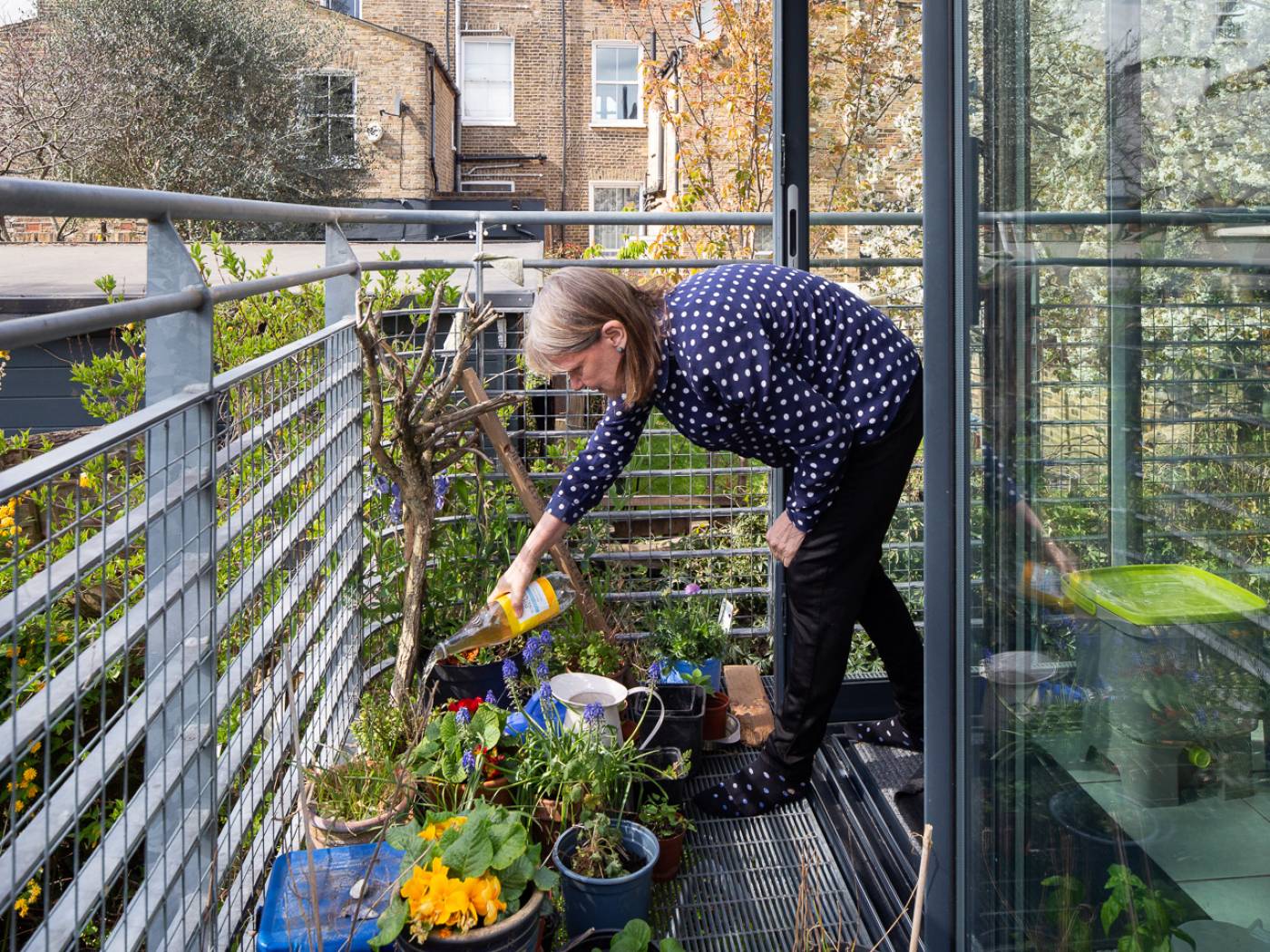
The many plants on Lois’ balcony however, love the plant nutrients produced by her home composter. While chatting after the photos, she enthused about being part of Xenia, and is very much looking forward to finally meeting up in person with the group soon. (Victoria Park. 2021)
NB You can control the slideshows by clicking on the dots underneath the images.
Light-Wave
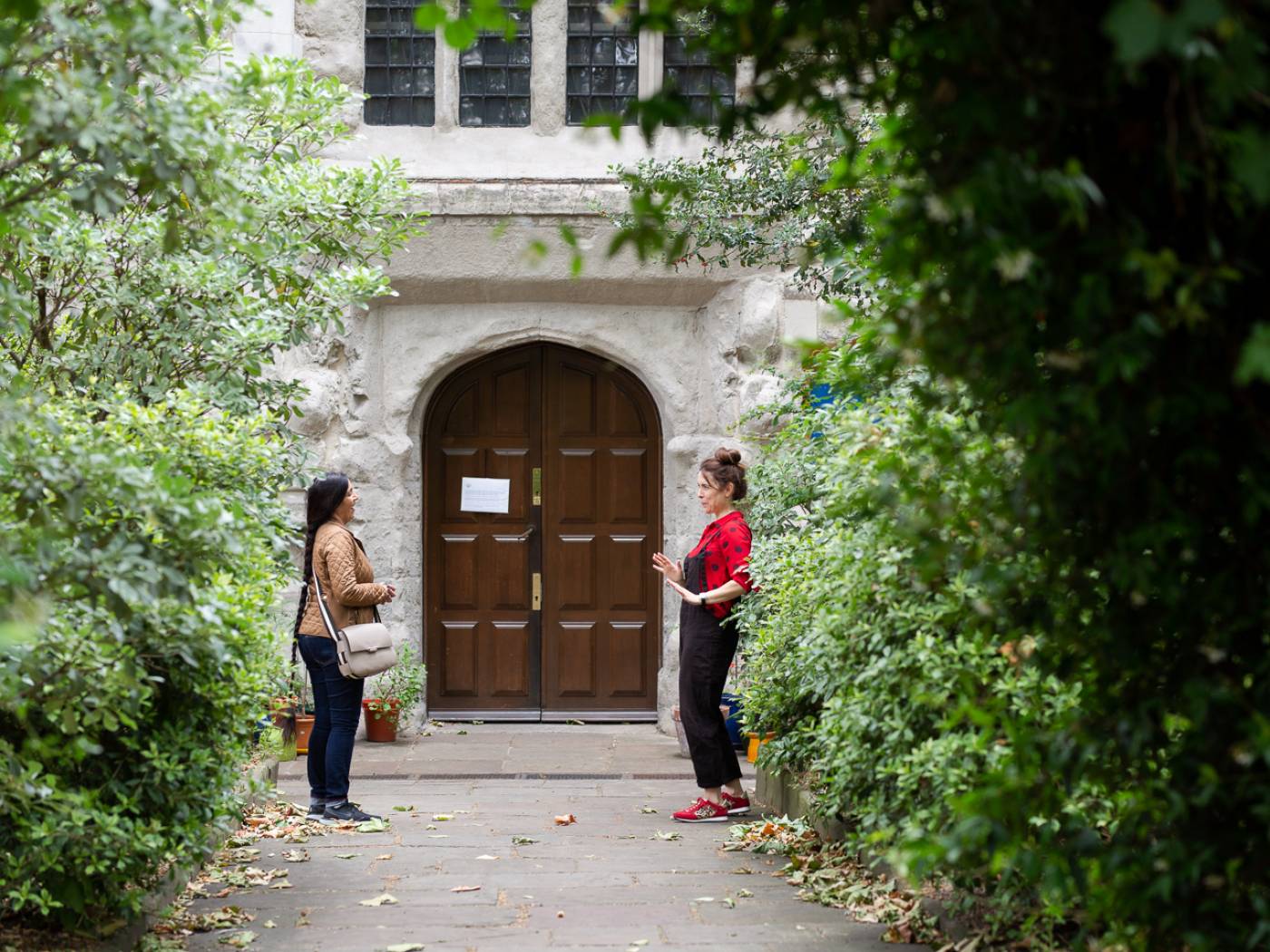
The first day I met Rubbena, we visited Bow Church. Situated on Bow Road in Tower Hamlets, and located incongruously in the middle of a busy through road, there has been a church on the site for over 700 years. Rubbena was interested in the history of the church, specifically of Joseph Jones, a deaf man who was employed as a servant to the church for most of his life. There is a plaque commemorating Joseph on the north side of the building. (Bow Church. 2020)

I know the area very well from my time working for the Bow Arts Trust nearby, and listened with interest to Rubbena explaining to her interpreter Anna Kitson why this site will be of interest to her plans for the film. The church is a location of deaf historical significance in East London, one of many highlighted in the discussions for the recording of Light Wave. (Bow Church. 2021)
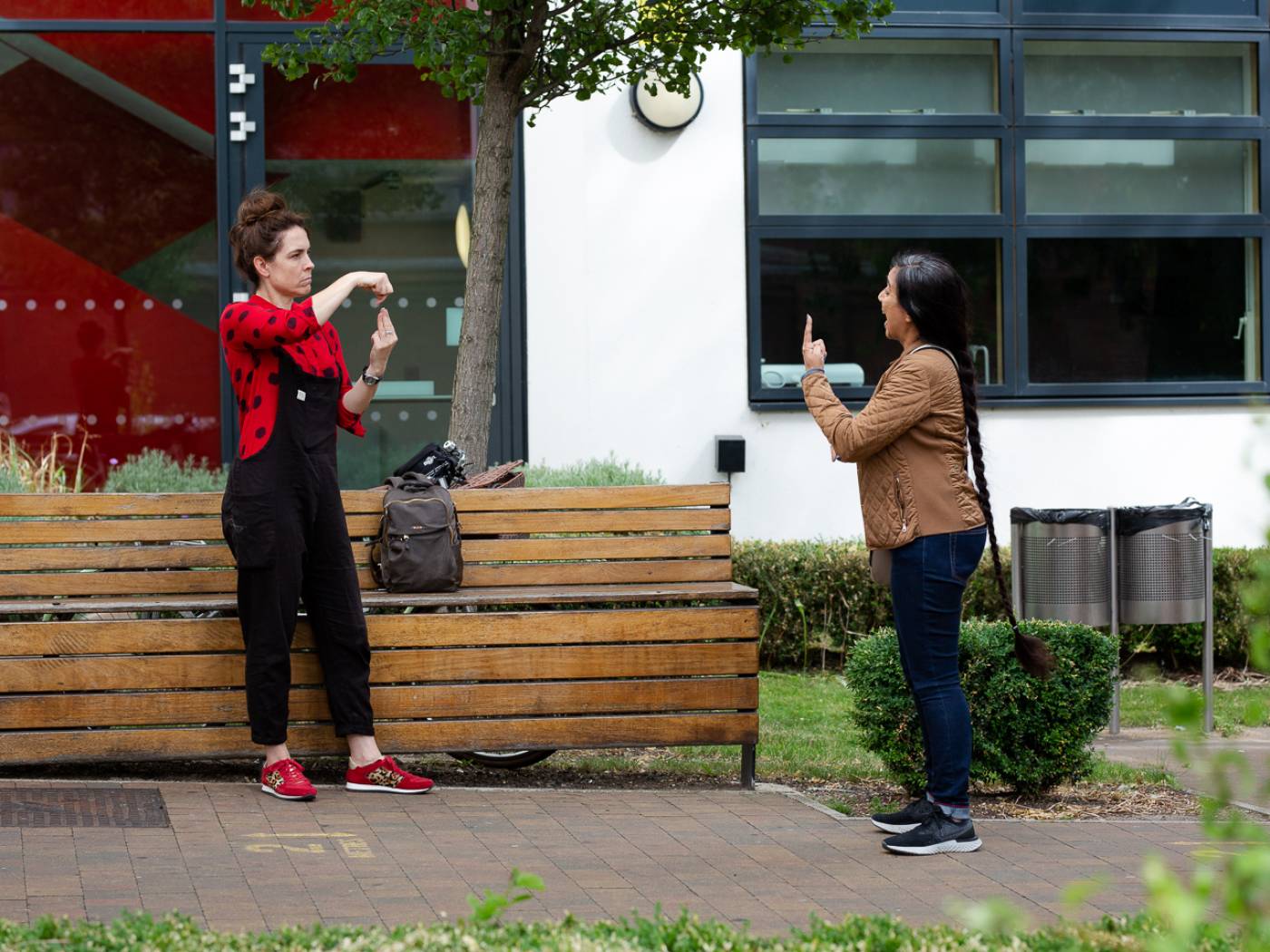
St Paul’s Way Trust School. 2020. We also visited St Paul’s Way Trust School, between Burdett Road and Bow Common Lane in Mile End. I lived right behind this school in the Leopold Estate for 4 years, documenting a community of artists and the rapidly changing area in the build up to the 2012 Olympics. Rubbena was hoping to make connections with the school as part of the commission, and we enjoyed exchanging experiences of witnessing the huge changes that have taken place in the area, including this Foundation Trust school, which was built in 2011. (St Paul’s Way Trust School. 2020)
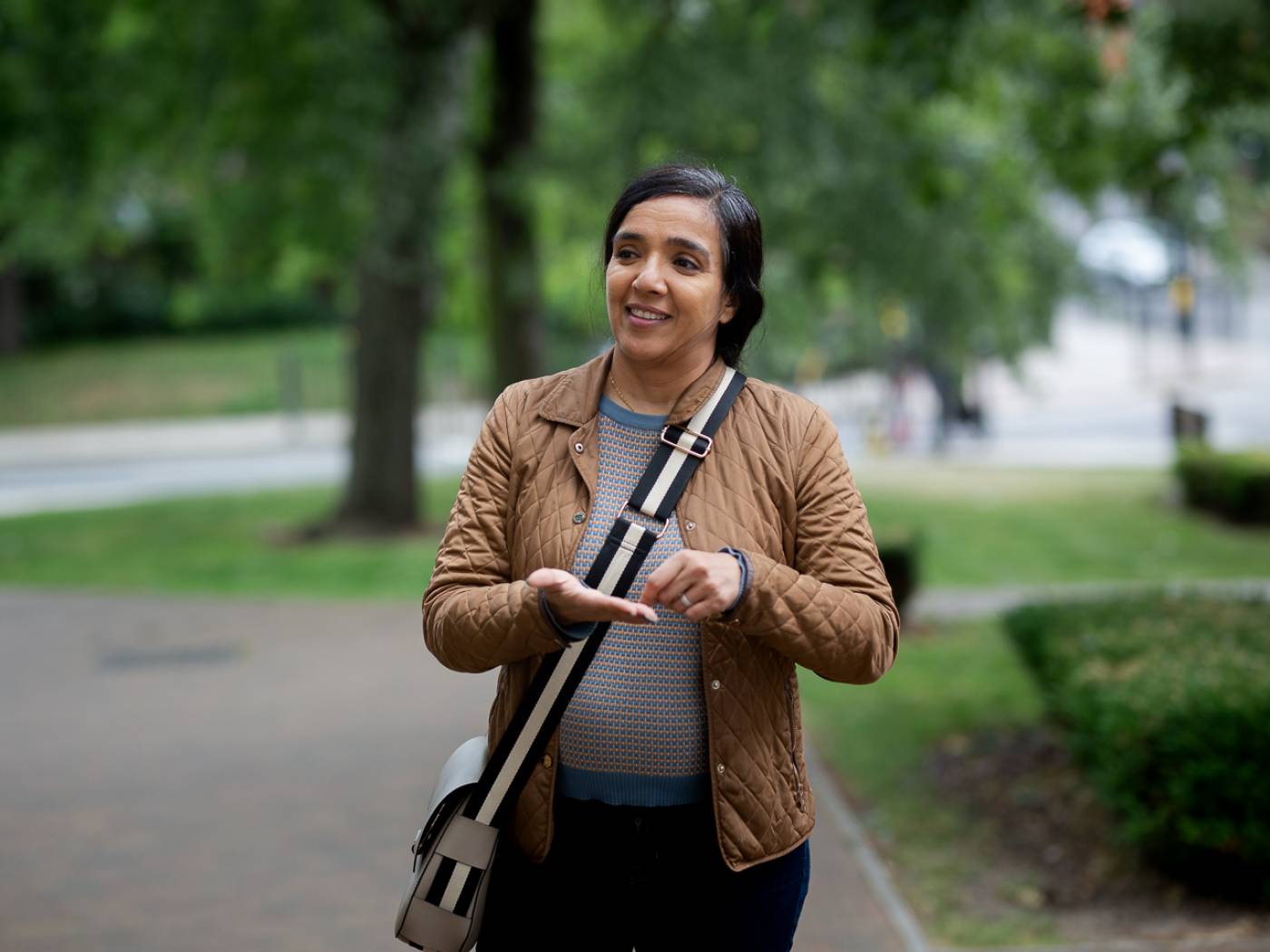
St Paul’s Way School. 2020. Photographing communication through sign language was new to me, and I had to work out very quickly how best to capture it! Rubbena and Anna understood the difficulties, and both slowed down and repeated certain signs in order for me to be able to capture them. (St Paul’s Way Trust School. 2020)
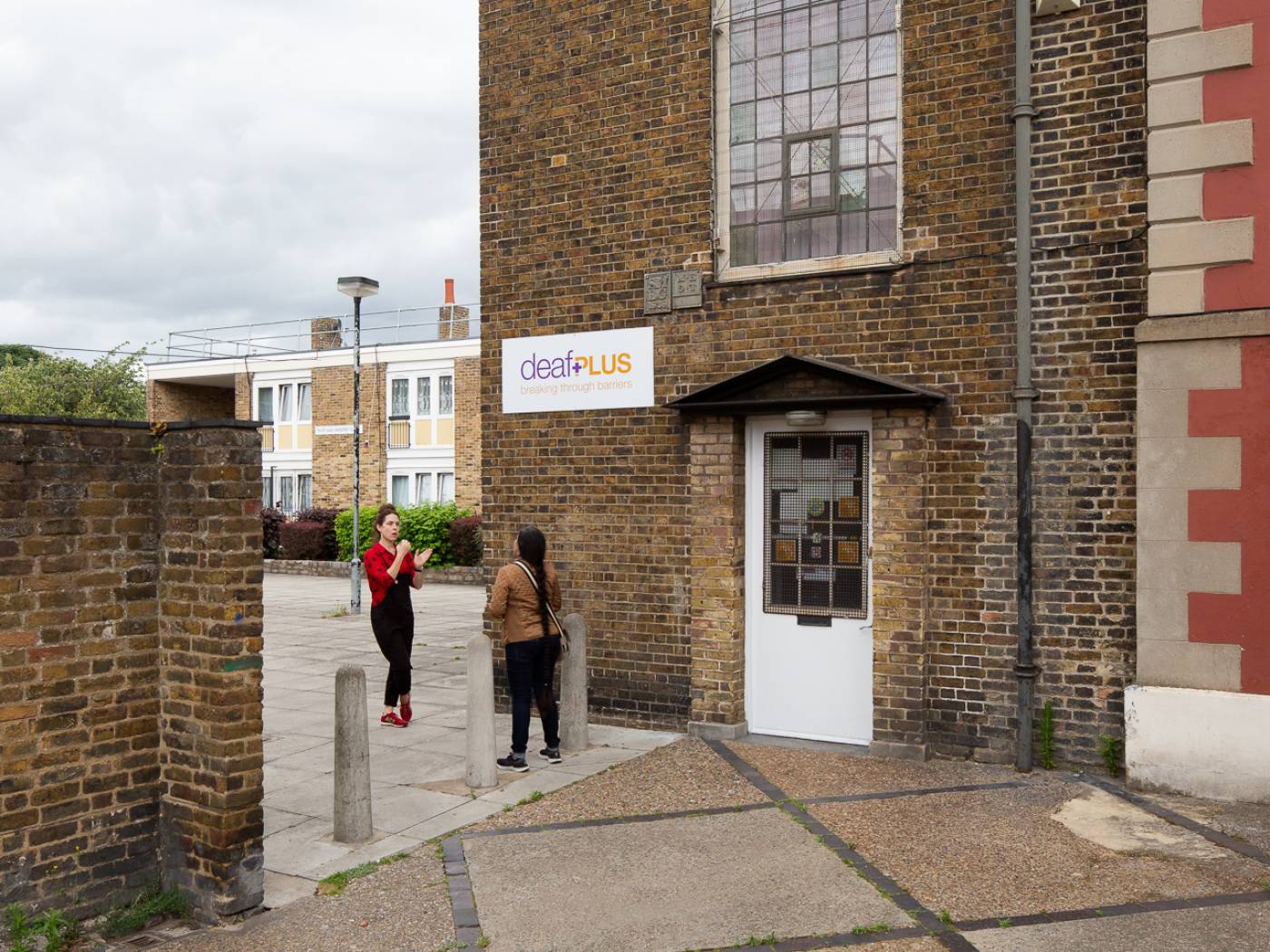
DeafPLUS, Whitechapel. 2020. Our final location for the day was the headquarters for the charity DeafPLUS, in Whitechapel. Tucked behind the A11 close to Whitechapel Station, the charity endeavours to promote access to mainstream services and equal opportunities for the deaf community. Rubbena emphasised the difficulty of deaf people gaining independence and autonomy within all aspects of their lives. Charities like DeafPLUS are an essential part of the progression towards this being a reality. (DeafPLUS, Whitechapel. 2020)
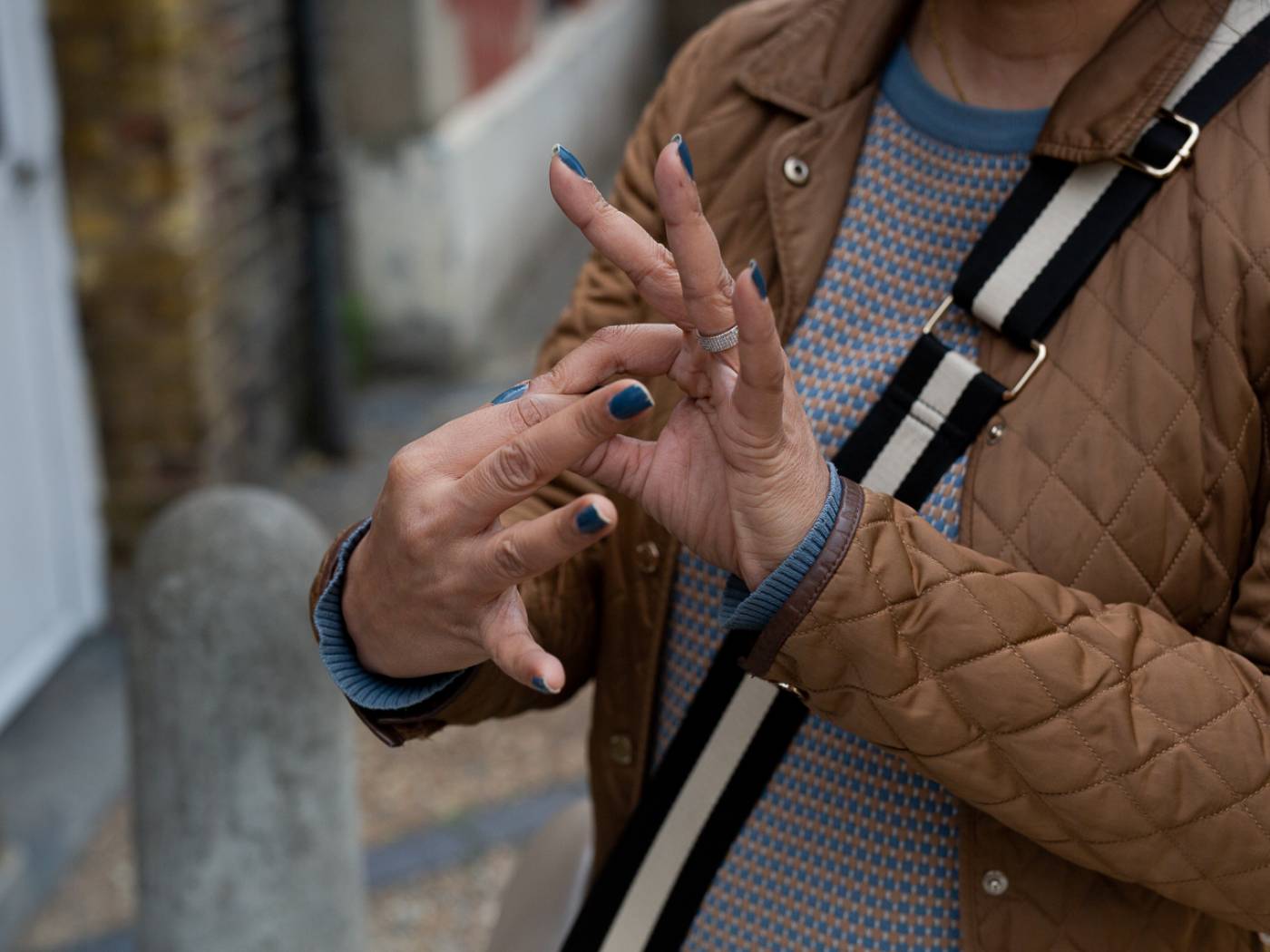
Rubbena demonstrated various signs for me to photograph. I was struggling to capture defined meaning in the signs, and I felt it would make sense to learn a few, so Rubbena chose a few signs that have significance to her film. This particular sign means ‘connected’. (DeafPLUS, Whitechapel. 2020)
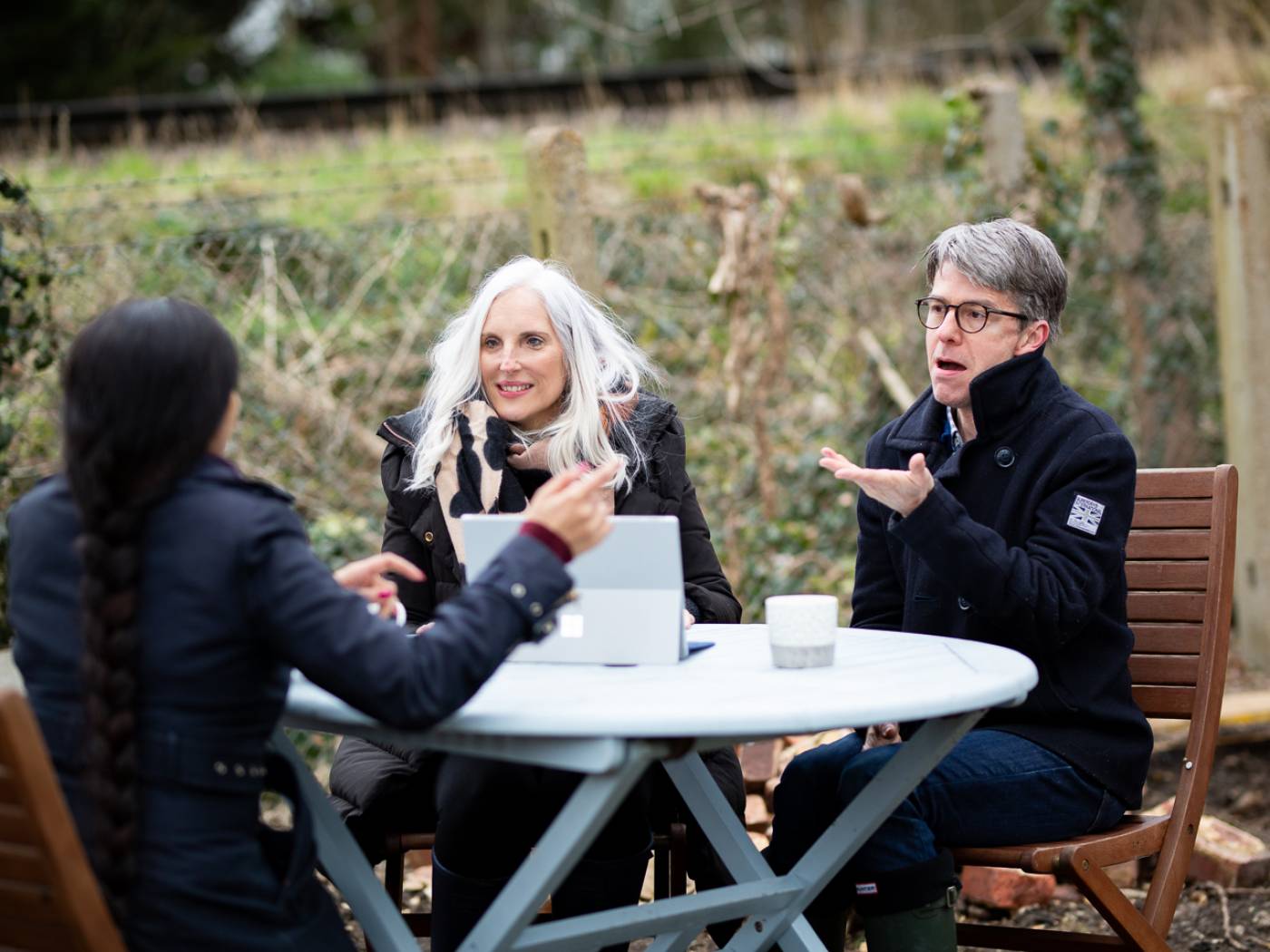
Towards the end of the commission period, I arranged to meet Rubbena at the house of Fiona and Alasdair Barclay, participants in the film Light Wave. On a freezing March weekend, they chatted with Rubbena in their garden about the making of the film, watching excerpts of themselves and other participants discussing themes such as sign language development and use in East London, and ideas for co-creation of artwork. It was the first time they’d seen the rushes, and it was wonderful to watch and record the responses. (Ashtead, Surrey. 2021)

Due to the limitations of making the film during the pandemic, all discussions were recorded remotely. Initially this raised obvious limitations with the footage for the film, but it also highlighted the creative and archival possibilities for sign languages recorded in this format. Rubbena and academic Bencie Woll have used the discussions recorded in the making of the film to raise the visibility and profile of the East London deaf community in a unique way. (Ashtead, Surrey. 2021)
NB You can control the slideshows by clicking on the dots underneath the images.
 Close
Close

